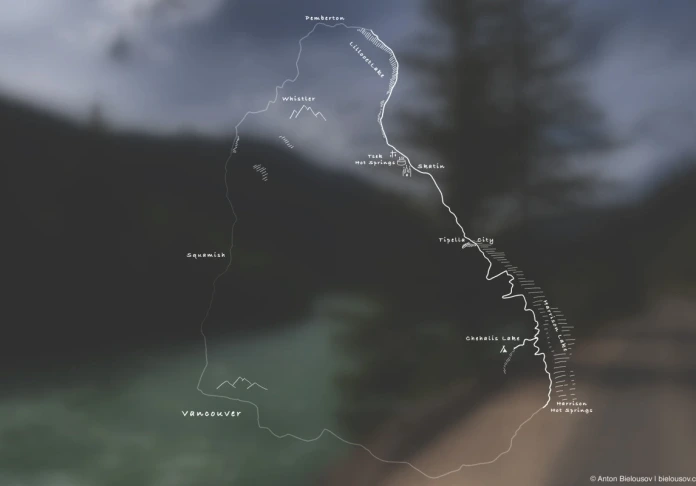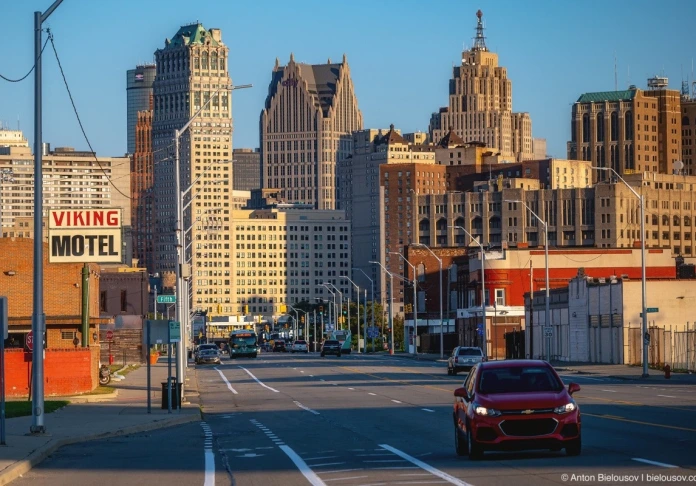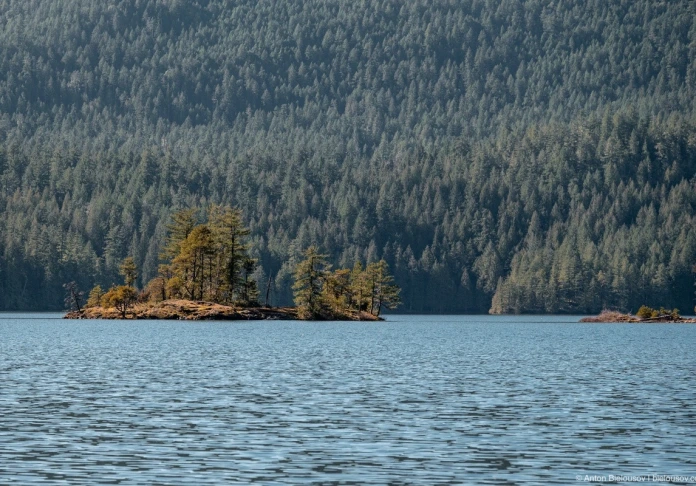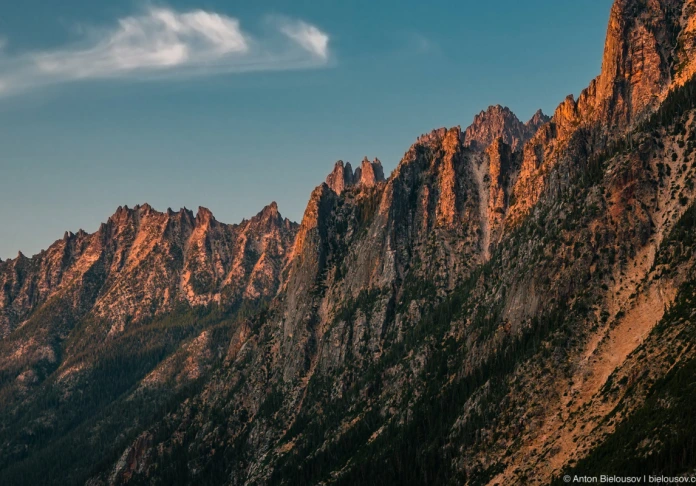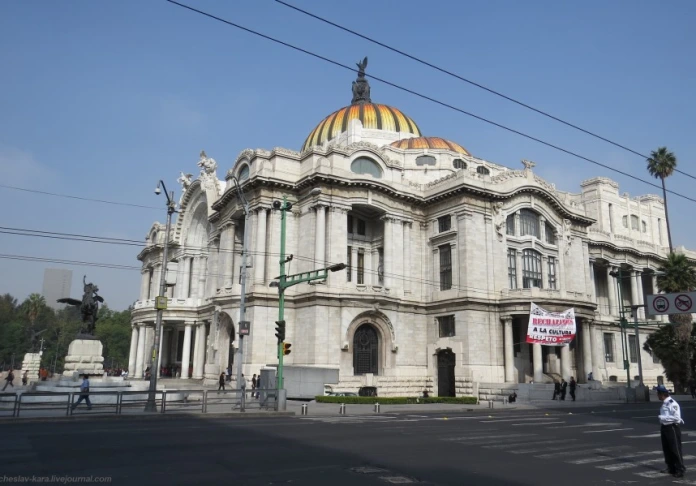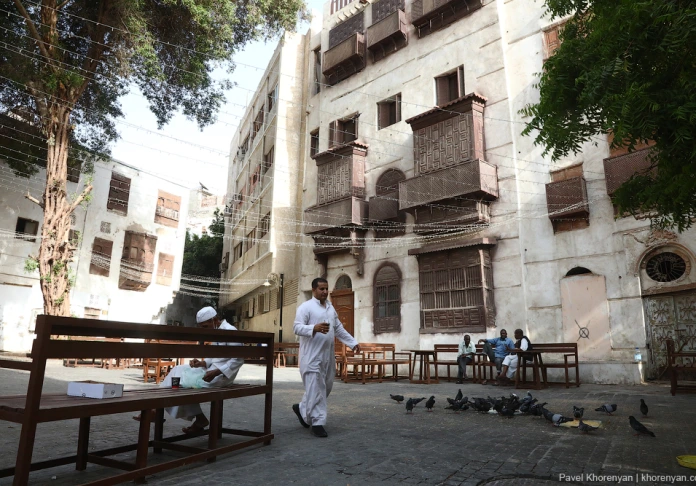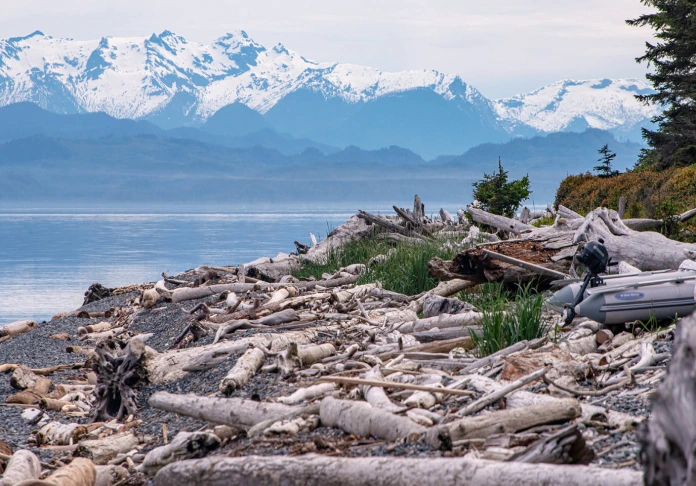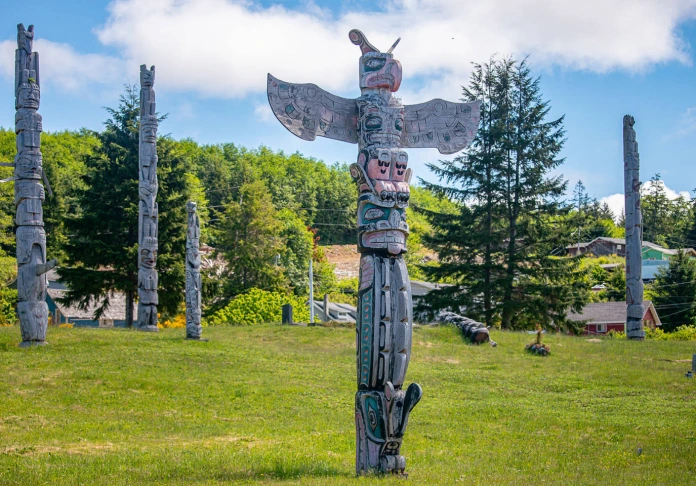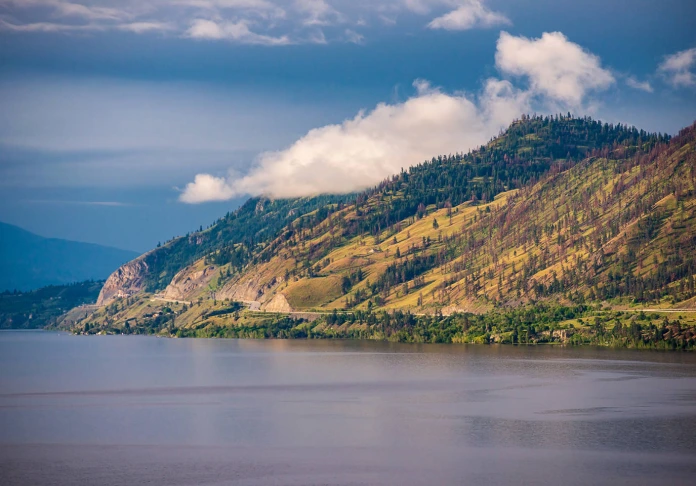Norway
Scandinavian holidays. Walk in the center of Oslo
Six years ago, I first went to Norway and stayed by her ecstatic. And here, in the middle of August, I was able to re-visit this beautiful European country and share my enthusiasm with my other half :) We bought exactly the same tour, in which I was in 2013, but over time it has undergone minor changes train made only more interesting. Our journey begins in the capital of Norway, Oslo (Oslo).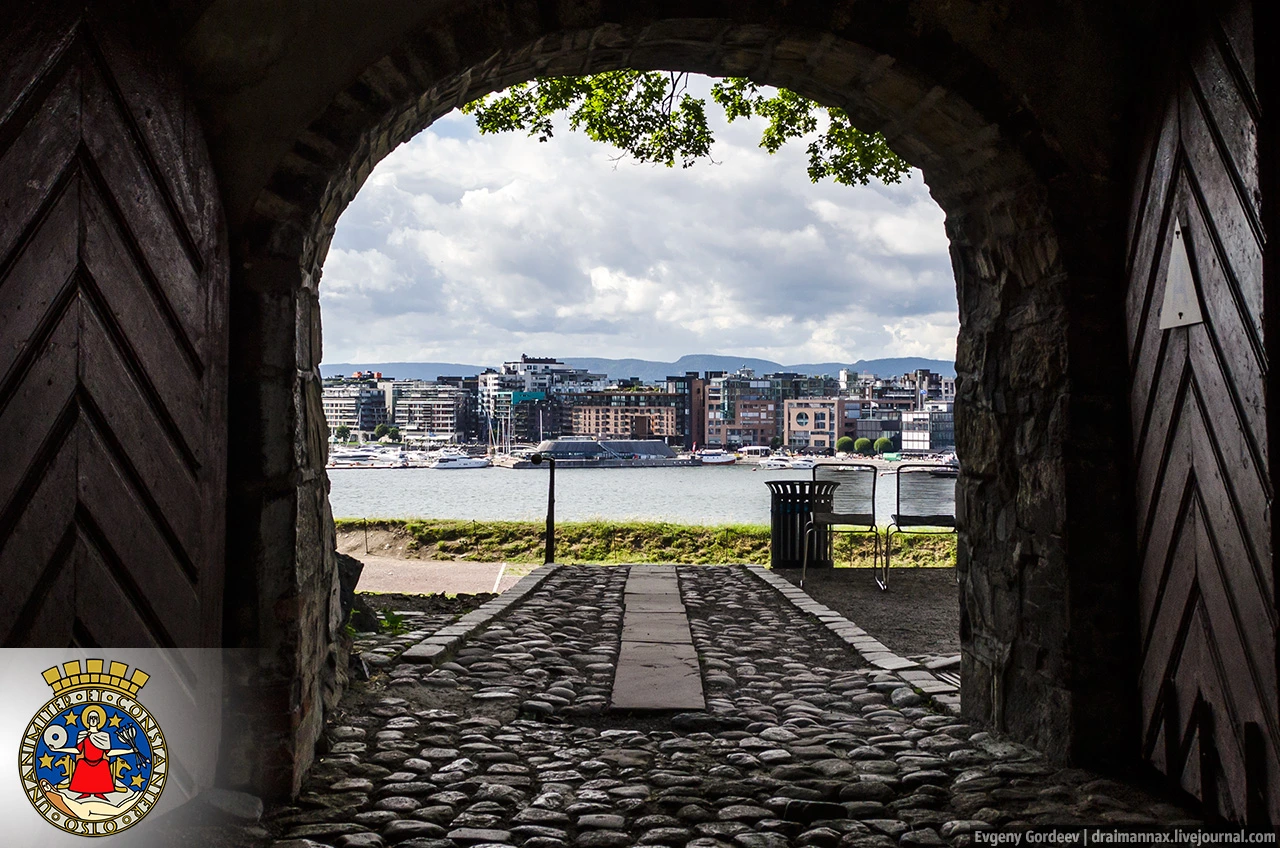
According to the vault of the sagas "The circle of the earth," the Icelandic skald Snorri Sturluson, Oslo was founded around 1049 by King Harald III. The heyday of the city came at the beginning of the XIV century, namely during the reign of Haakon V St. He built the Akershus Fortress and became the first Norwegian king permanently residing in Oslo that has helped the city to become the capital of the country. Oslo was an important trade center and began to establish links with the Hanseatic League, and its population has increased to 3,500. In 1349, in Oslo, the plague came, wiped out three-quarters of the city's population. In 1397, Norway became part of the Kalmar Union, the state capital was moved to Copenhagen and Oslo became a provincial administrative center. Over the years numerous fires devastated built mostly of wood city. After a fire in 1624, King Christian IV ordered not to restore the old city, and to build a new near Akershus, which he named in his honor Christians. Despite the prohibition of the king, the old town was re-populated, mainly the poor who do not have the means to live in a prosperous Christians. In 1814, the provincial city once again became the capital of Norway, but as a part of the Swedish-Norwegian union. During the XIX century, Christiania is rapidly expanding, and its population has increased from 10 thousand to 230 thousand by 1900. In 1877 was held the language reform, and the city was named Christiania, which in 1905 became the capital of Norway is already independent. In 1925, the city returned to its historical name - Oslo. During the Second World War, Oslo, as the rest of Norway was occupied by Germany. In 1952, the city hosted the VI Olympic Winter Games. By 1997, the number of the Oslo population reached half a million people. Currently, Oslo - the capital and largest city in Norway with a population of 673,469 people.
Coat of Oslo is a modern version of the city seal in 1300. The coat of arms depicts the legend of the Holy illustration Hallvarde (aka Hallvard Vebjørnsson), who swam across the ship Drammenford, he rose to defend the life of the woman granted asylum on his ship. The crew unjustly accused of stealing a woman, and Hallvard, protecting her, was killed by being shot with arrows. The woman was buried on the shore, and Hallvarda decided to drown in the fjord, tied to his body millstone, but his remains miraculously did not sink, despite the weight. Veneration Hallvarda arose in the Middle Ages, it is considered the protector of the innocent. At the edge of the emblem is an inscription in Latin that says: "the ET OSLO UNANIMITER CONSTANTER" (Oslo, uniform and constant).
02. We begin our short walk through the center of the Norwegian capital to the Castle Square or Festningsplassen (Festningsplassen). It has long been carried out various kinds of parades and festivals, and June 1, 1989 on the area of a solemn Mass celebrated by Pope John Paul II. The most notable building in the square - it is the home of the commandant of the fortress (Kommandantboligen), built in 1844.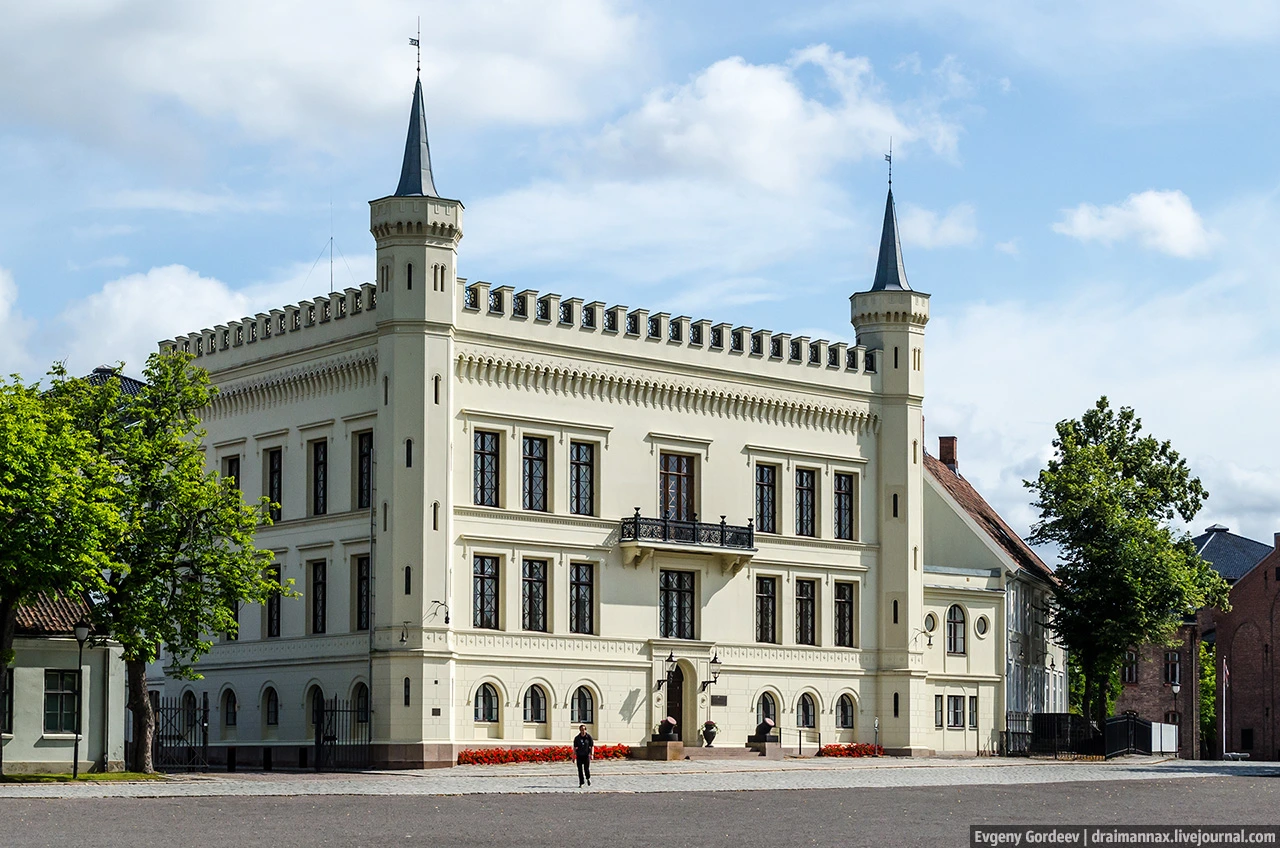
03. Mention should also be open in 1970, the National Monument to the victims of the war years 1940-1945 (Nasjonalmonumentet for krigens ofre 1940-45). A large female figure symbolizes Norway and men - her sons, who defended their homeland.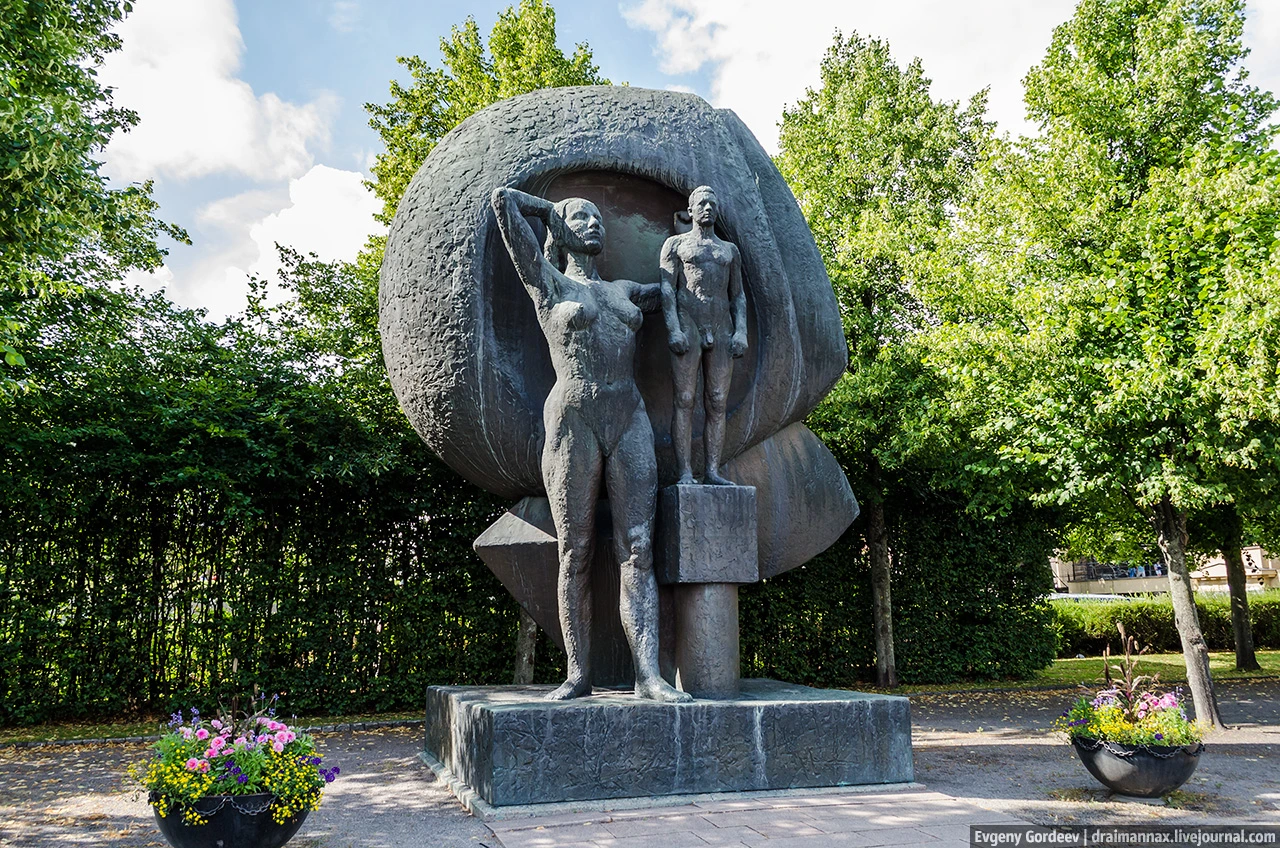
04. But we move on. After the bridge over the street or the Royal Kongens (Kongens gate) ...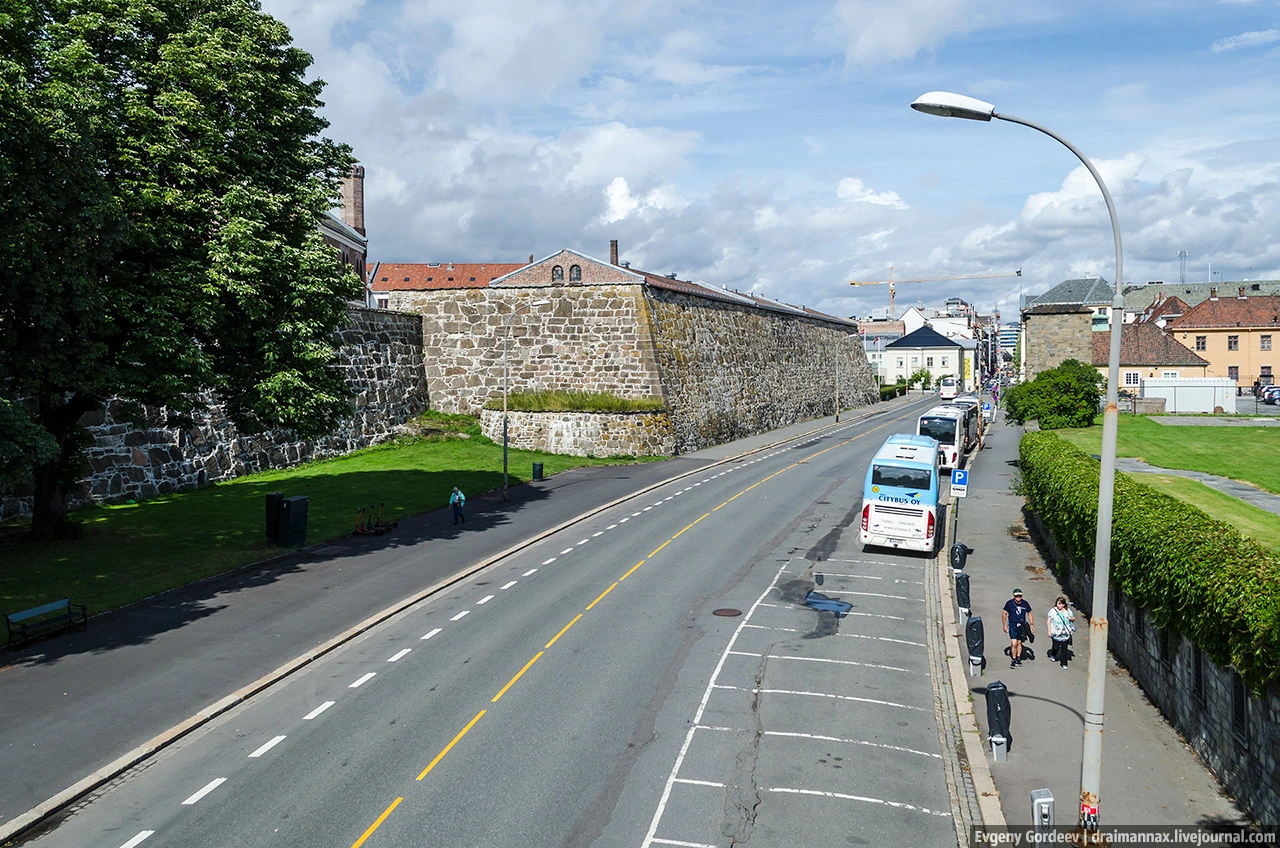
05. ... and find ourselves in the castle and Akershus Fortress (Akershus slott og festning). For the first time the fortress is mentioned in 1300, and its founder is considered the king Haakon V of the Holy, who built it to protect Oslo. Throughout its history the castle was subjected to numerous rearrangements, and at the beginning of the XIX century and he did fell into disrepair. At the end of the XIX century in Akershus started extensive restoration work, completed only in 1976.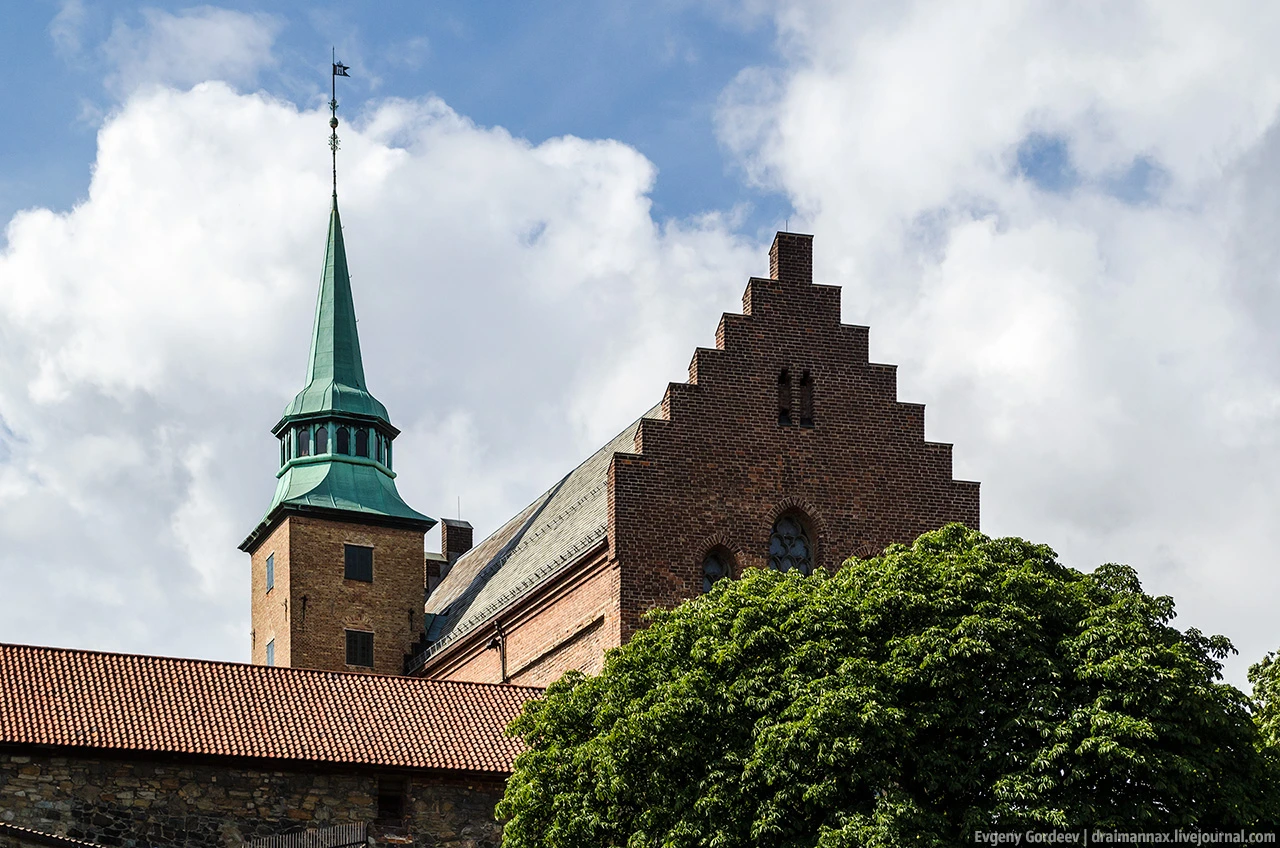
06. During the Second World War it housed the Gestapo. In May 1945, the castle was returned to the Norwegians. After the war on its territory were executed 8 people accused of collaborating with the Nazis.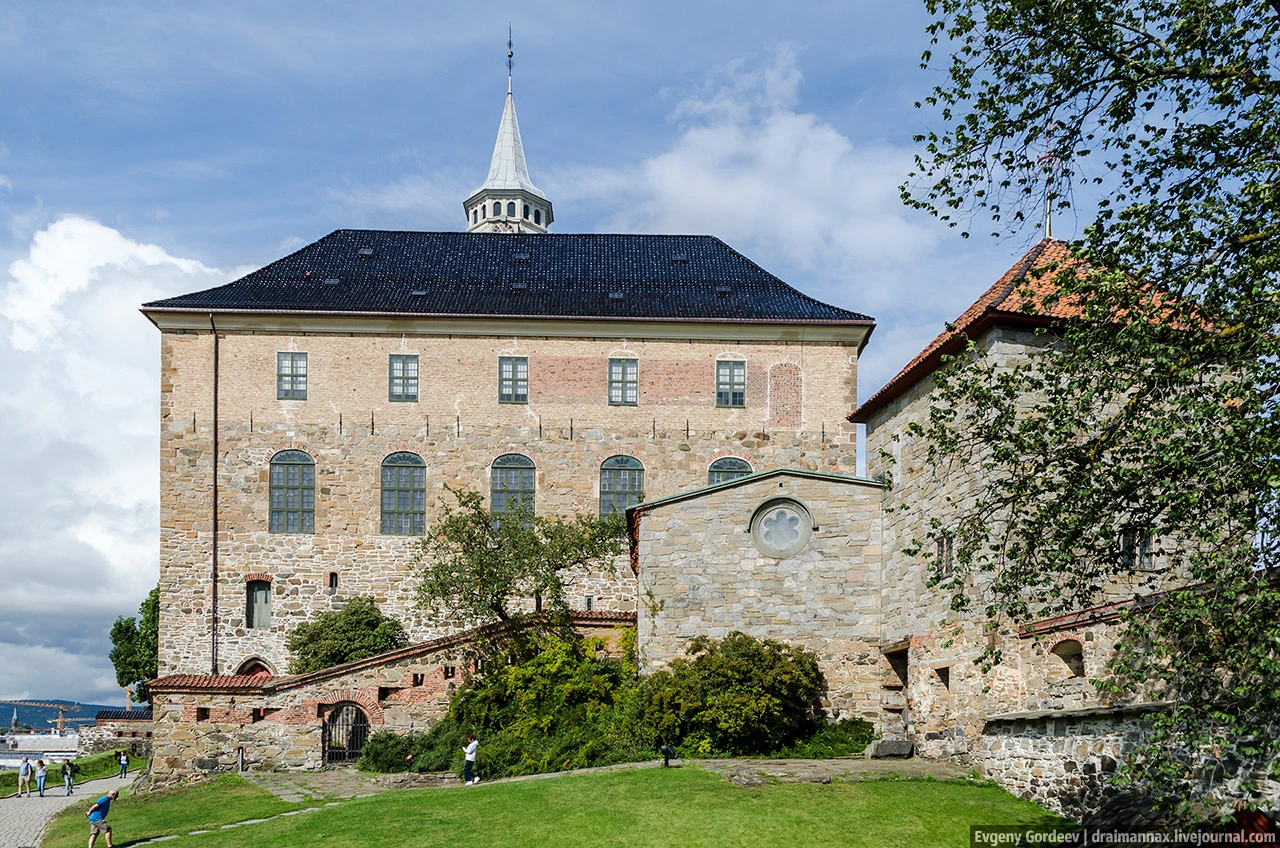
07. Currently, the castle is located a number of museums, as well as the headquarters of the Norwegian Armed Forces and Ministry of Defense.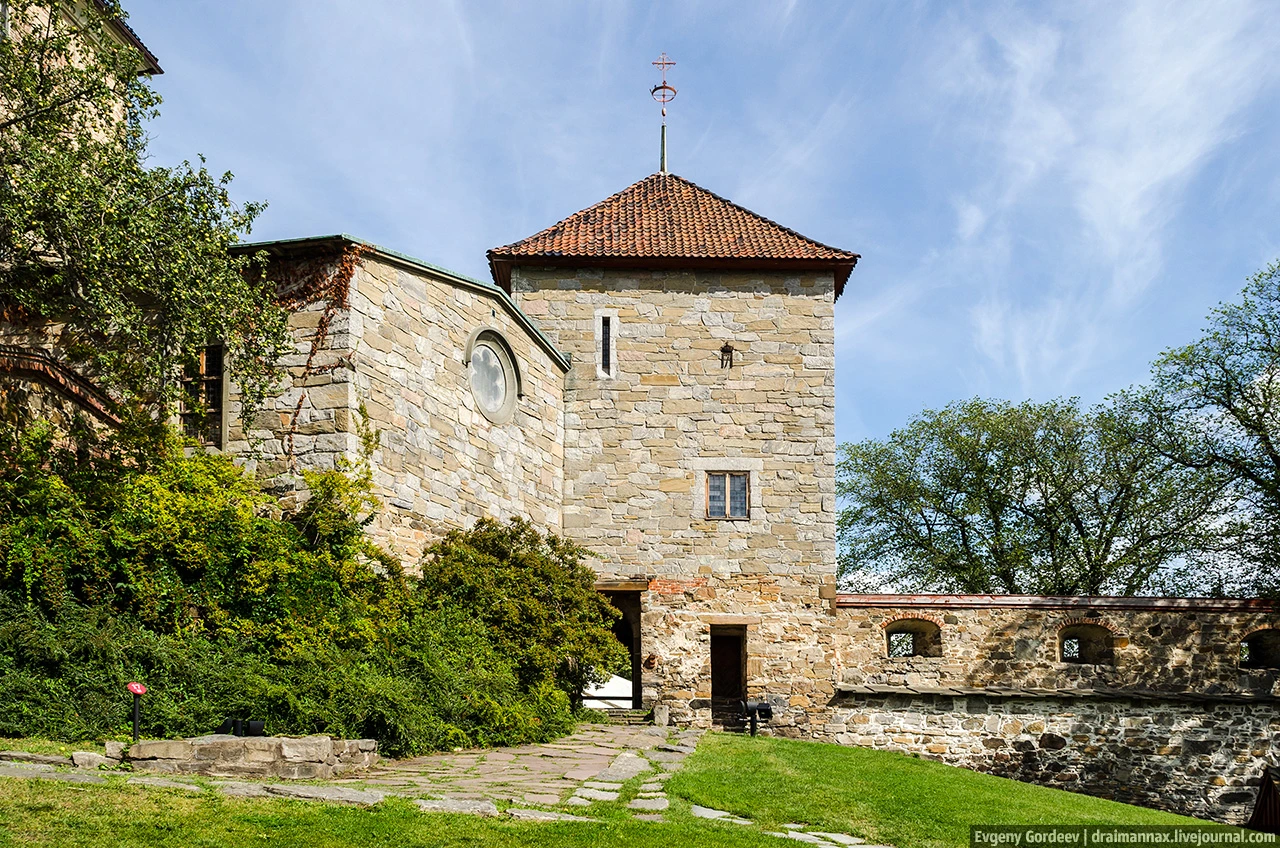
08. With fortifications excellent views of the Oslo fjord bay (Oslofjorden), which geologically is not a fjord.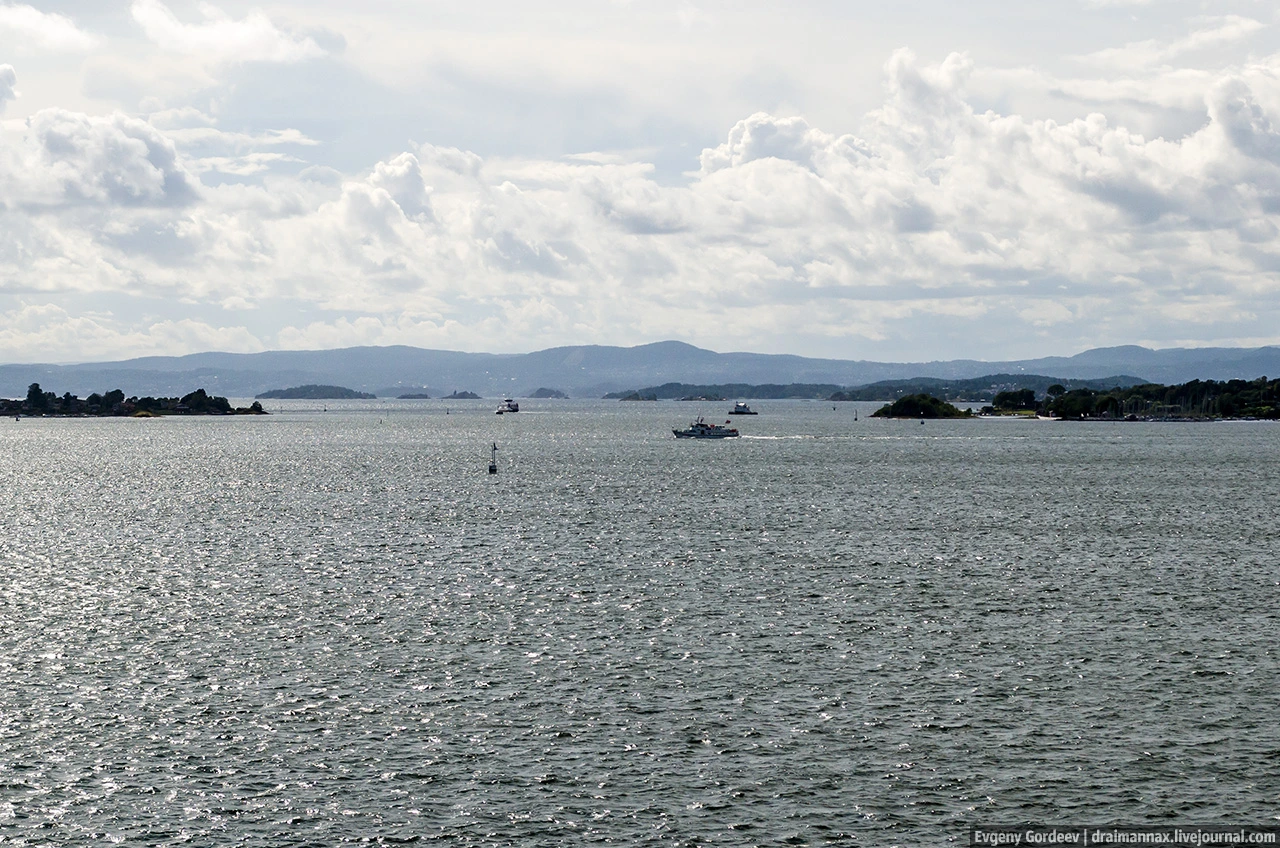
09. On the waterfront was seen French electric unmanned bus Navya Arma, working in the city since April 2019.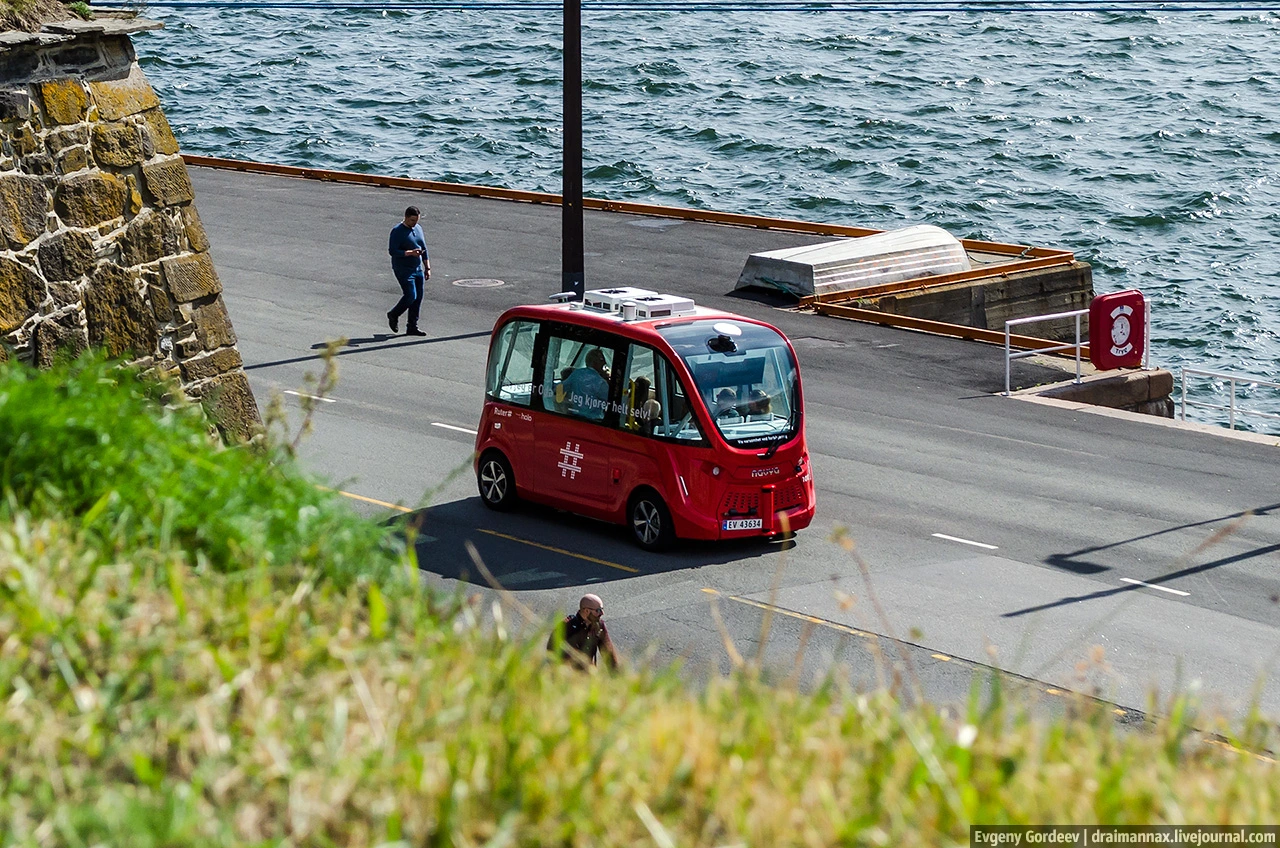
10. District Aker Brugge (Aker Brygge).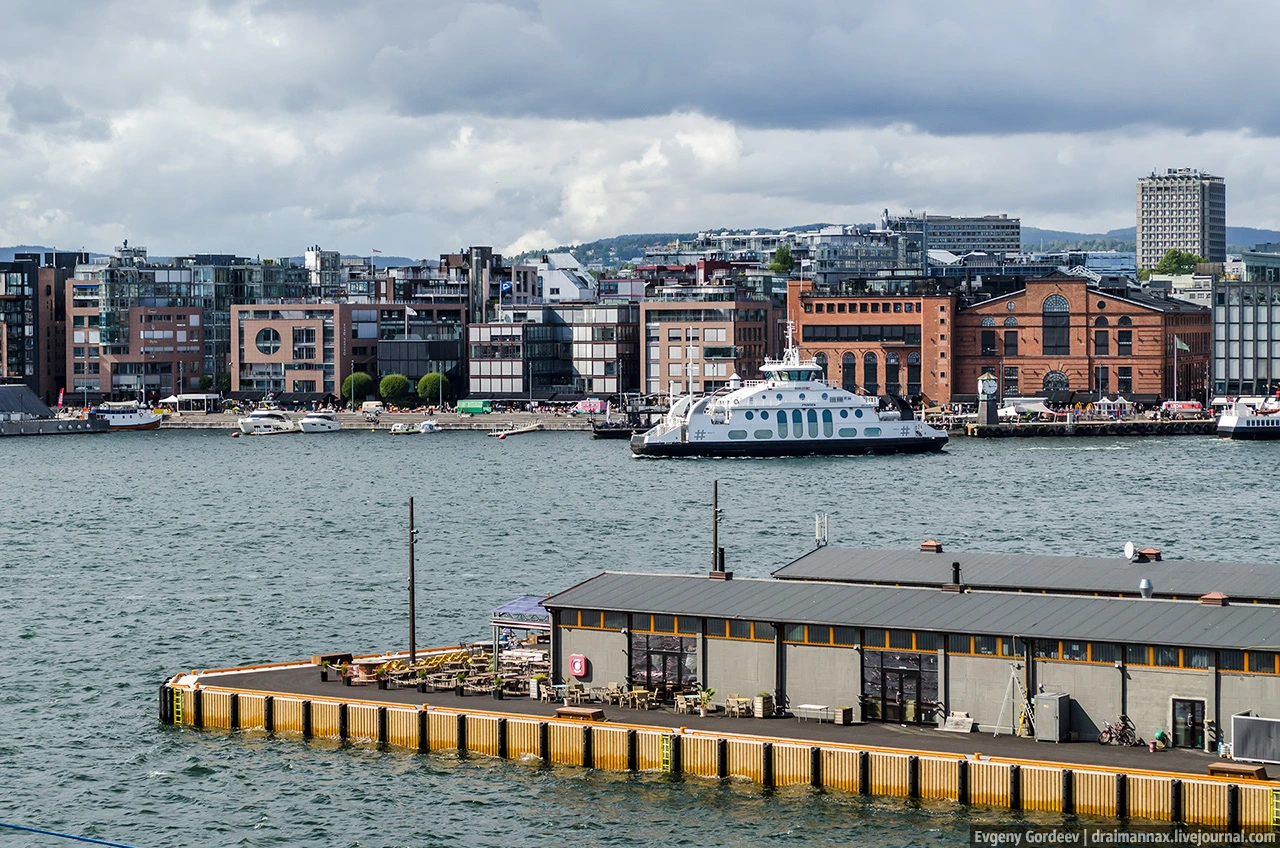
eleven.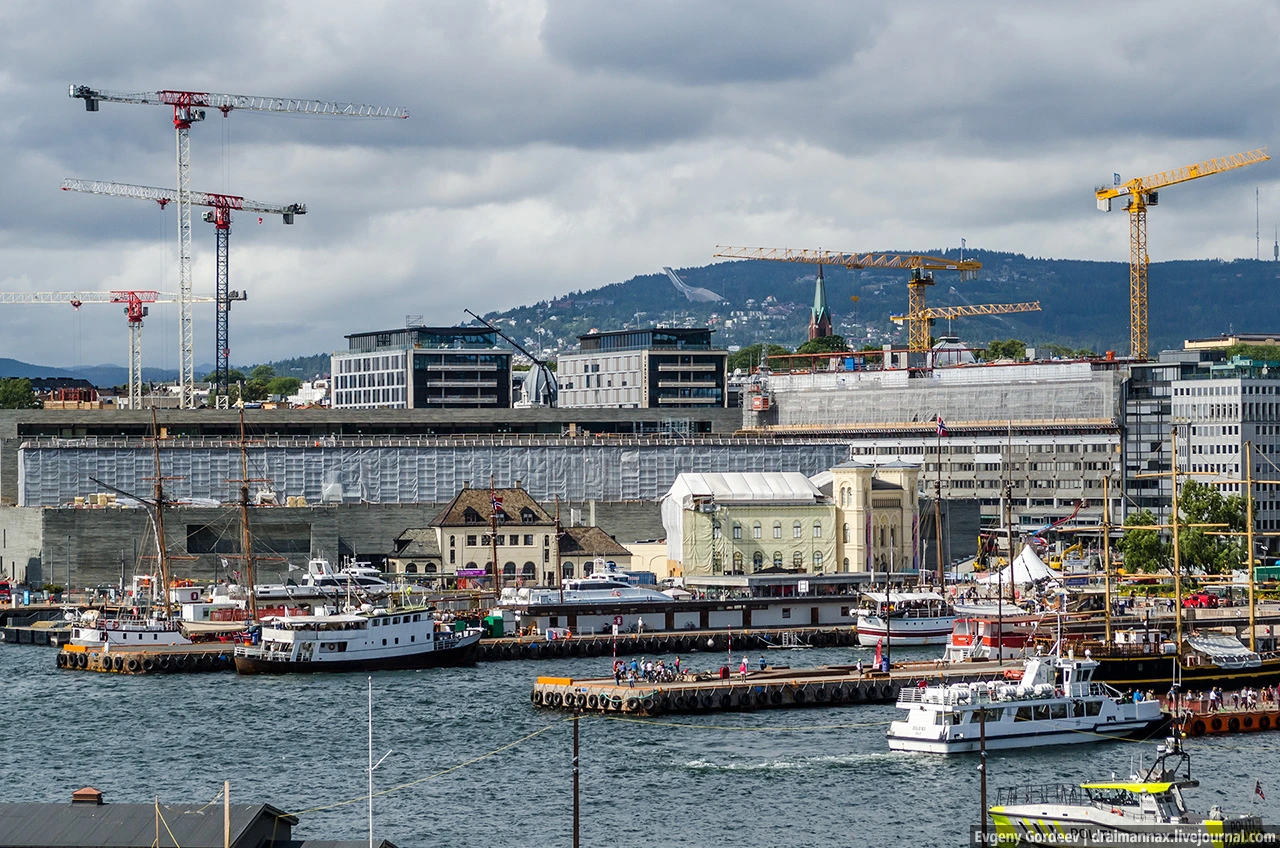
12.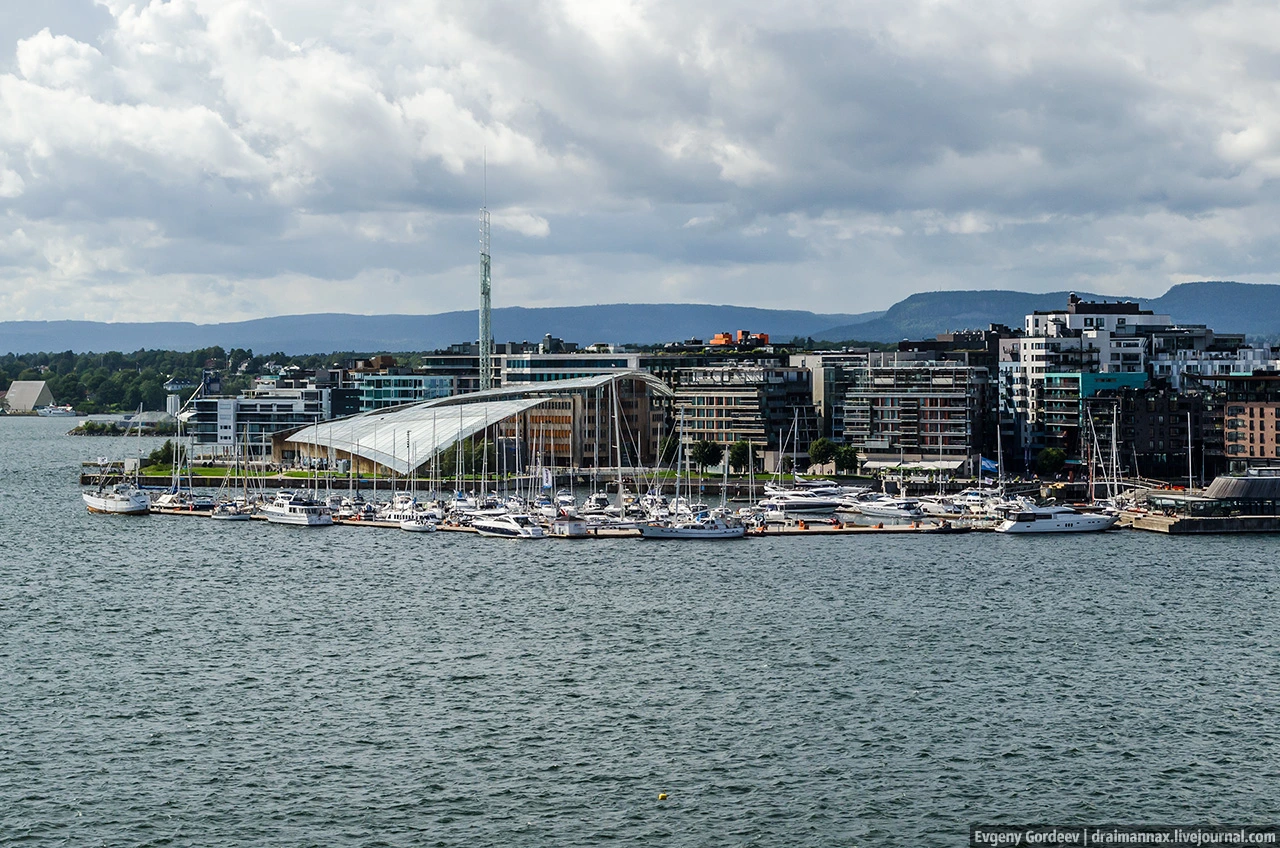
13. We go around the castle on the north side.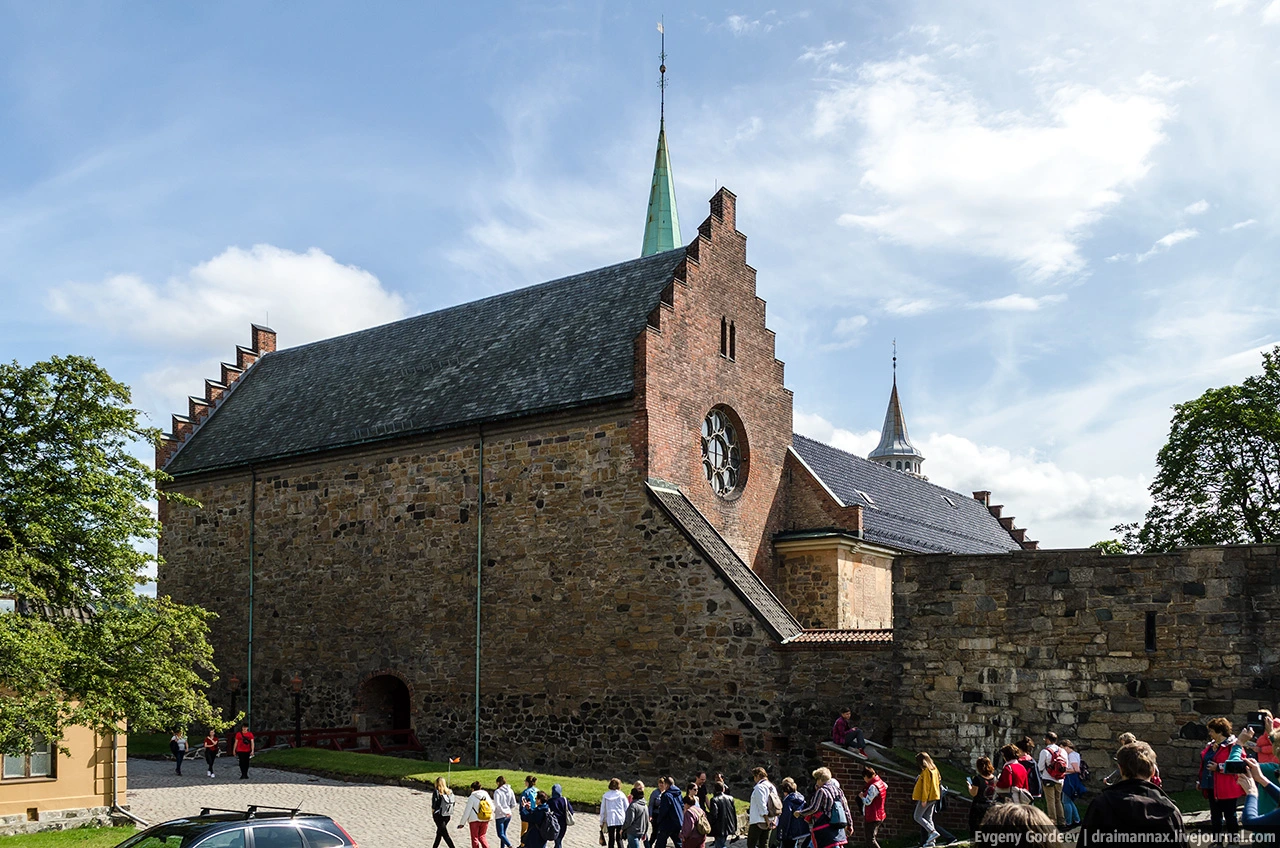
14. It can be seen very well built in the years 1931-1950 the building of City Hall (Oslo rådhus). Every year on December 10 in the Town Hall held a ceremony awarding the Nobel Peace Prize.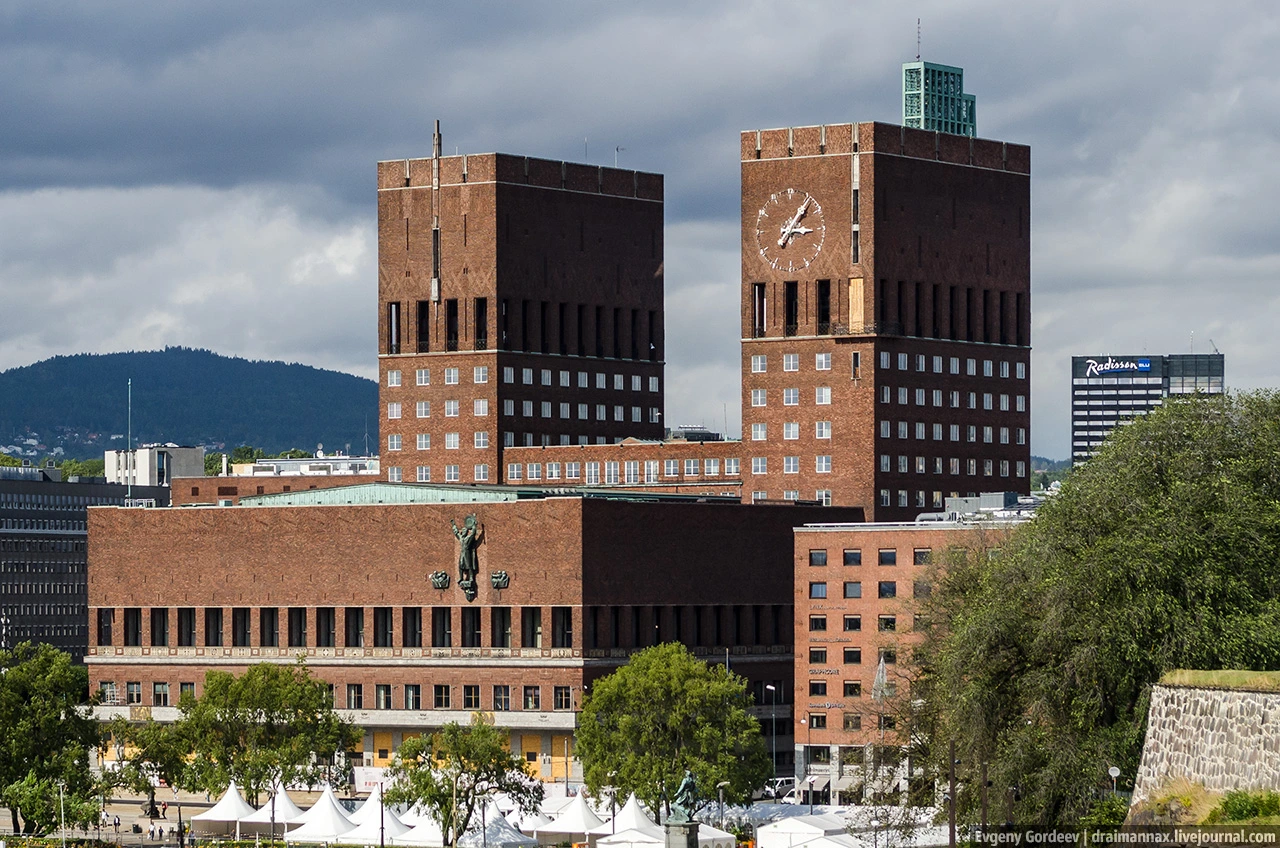
15. Also in the presence of a suitable optics can be considered a museum on the peninsula Byugdoy (Bygdøy): Norwegian Maritime Museum (Norsk Maritimt Museum), "Fram" Museum (Frammuseet) and the Museum of "Kon-Tiki" (Kon-Tiki Museet).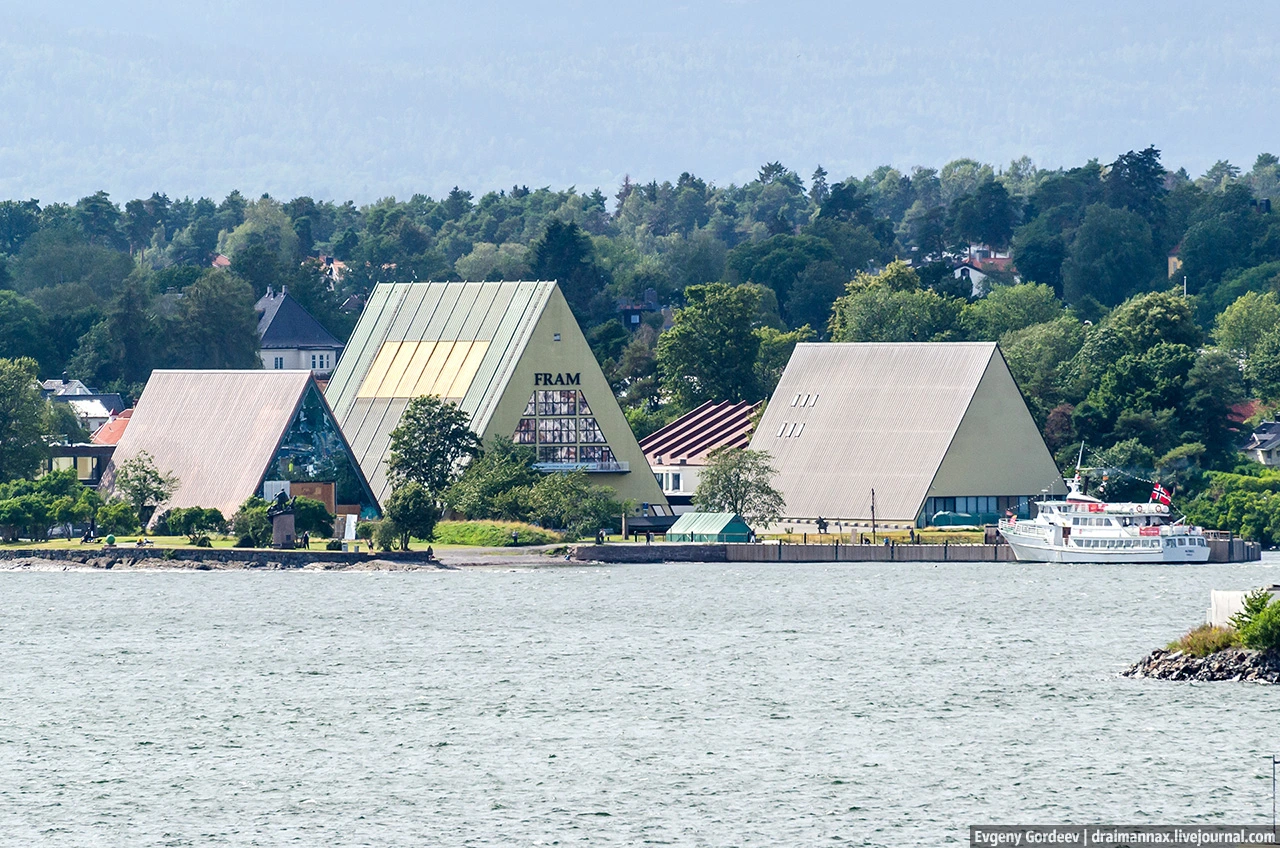
16. From here you can watch the ships scurrying around the bay.
Marine passenger ship of coastal navigation Båtservice V, launched on presumably in 1954, the home port - Oslo.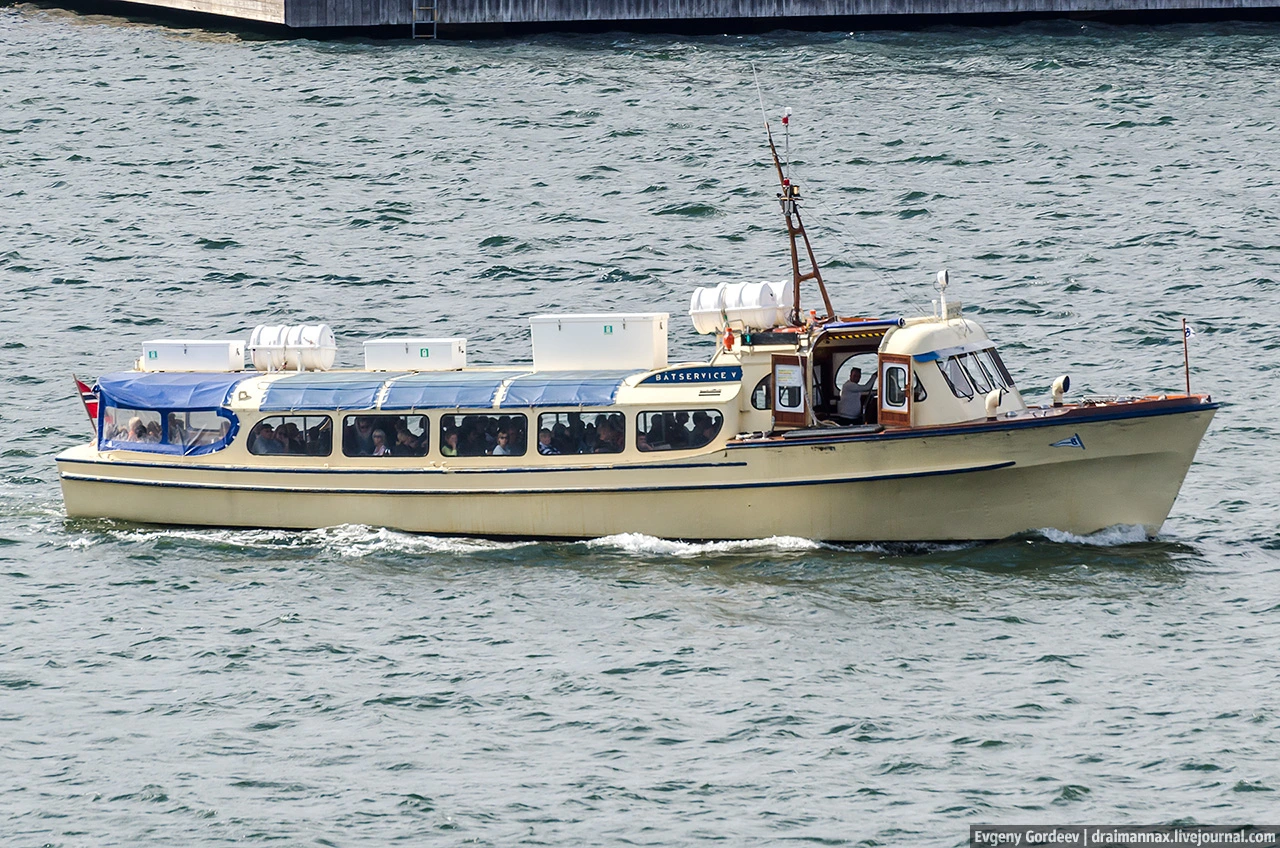
17. The cruise ship of the type "Galaxy", launched in 1996, the home port - Valletta.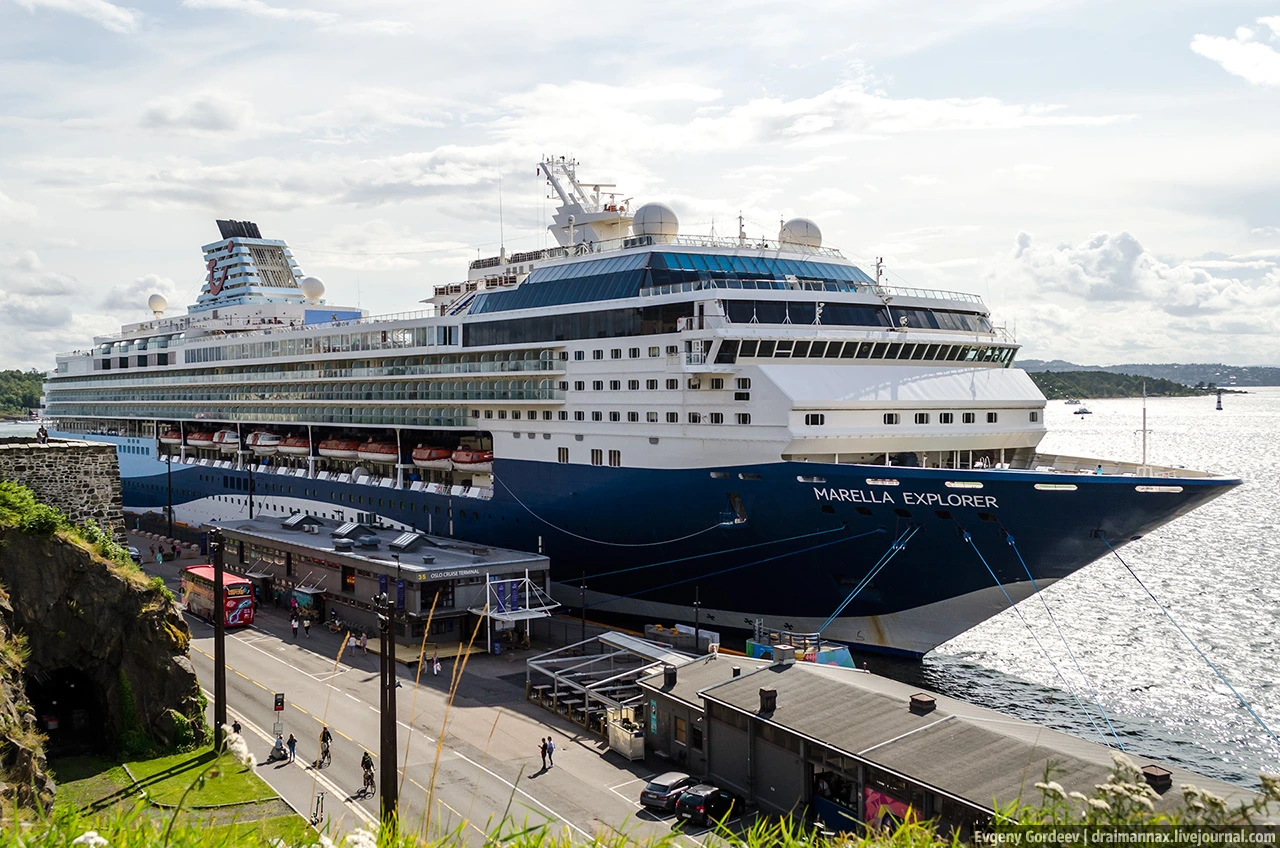
18. Few of the local street art.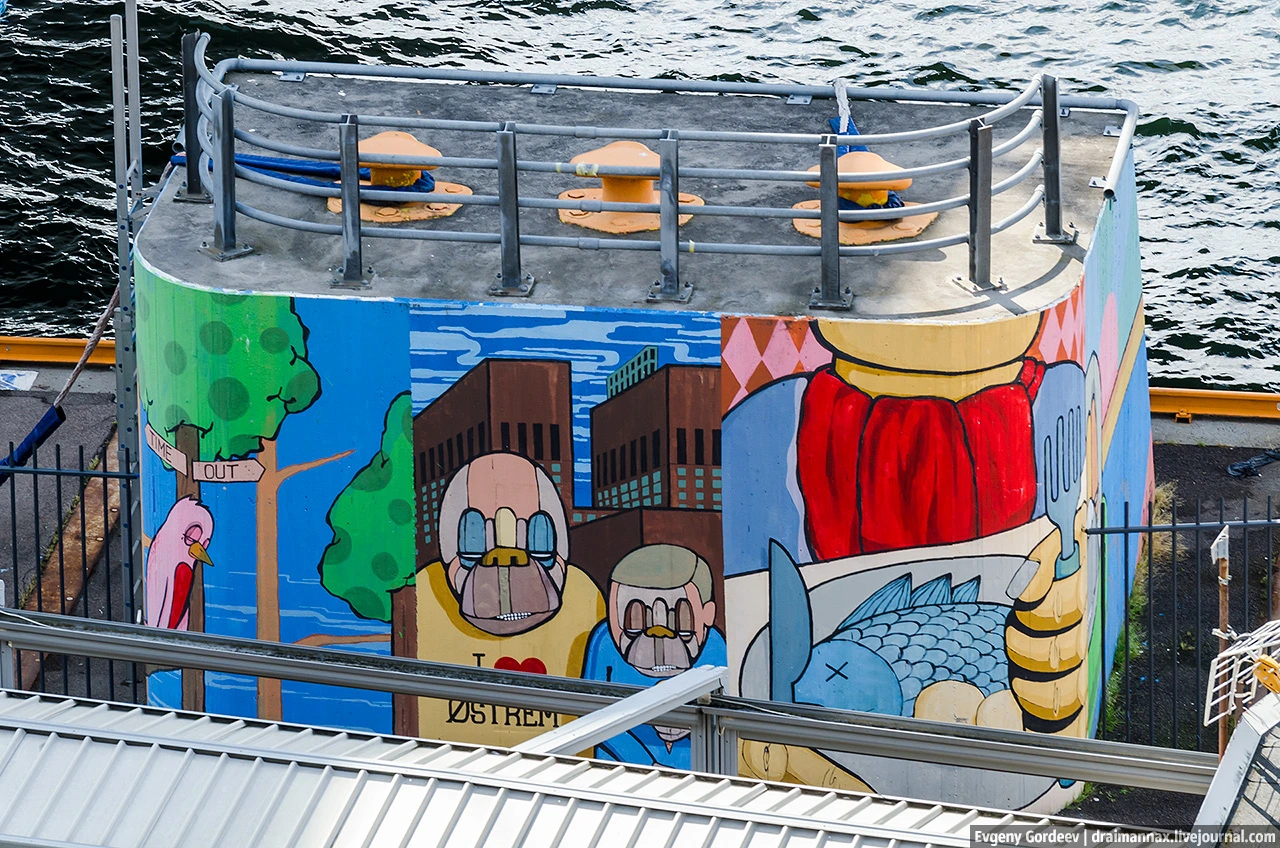
19.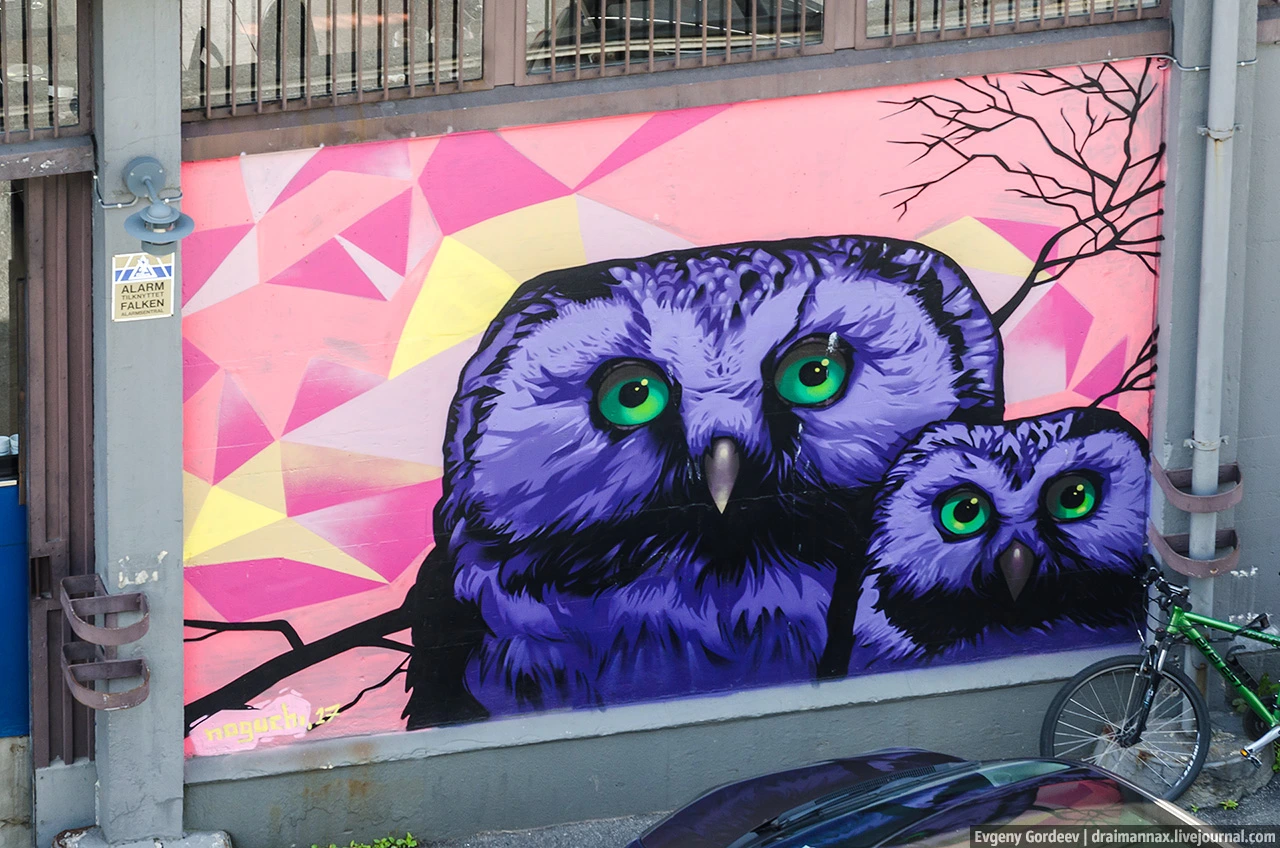
20. The building of the Norwegian Resistance Museum (Norges Hjemmefrontmuseum), dedicated to the fight against the Norwegians with the German occupiers during the Second World War.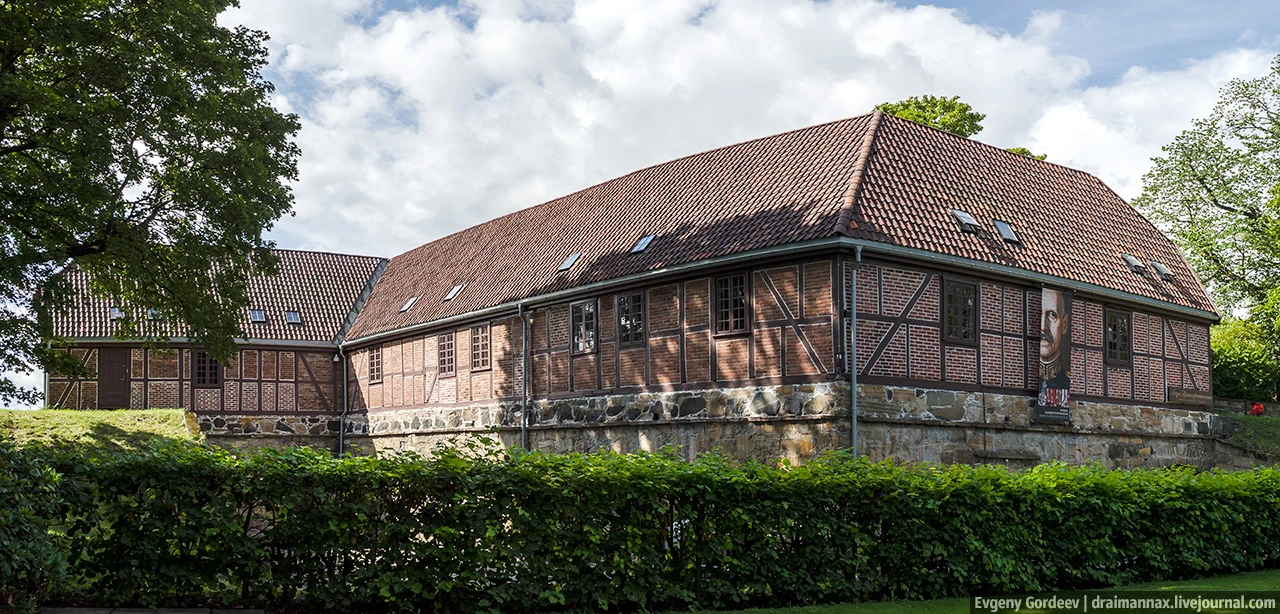
21. Next to the museum on the site of the shooting in February and March 1945, 40 members of the Resistance mounted a memorial. The inscription on it reads: "They fought, they fell, they gave us everything."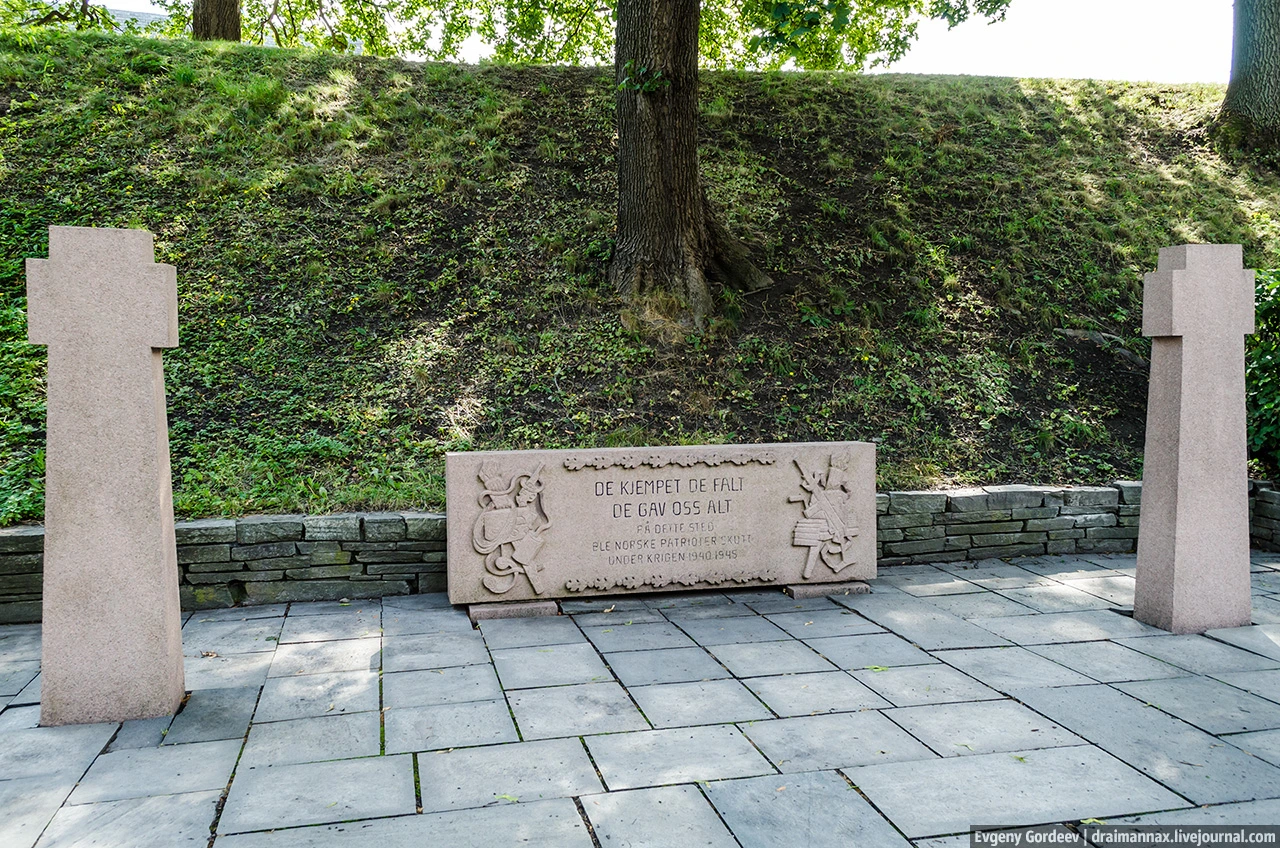
22.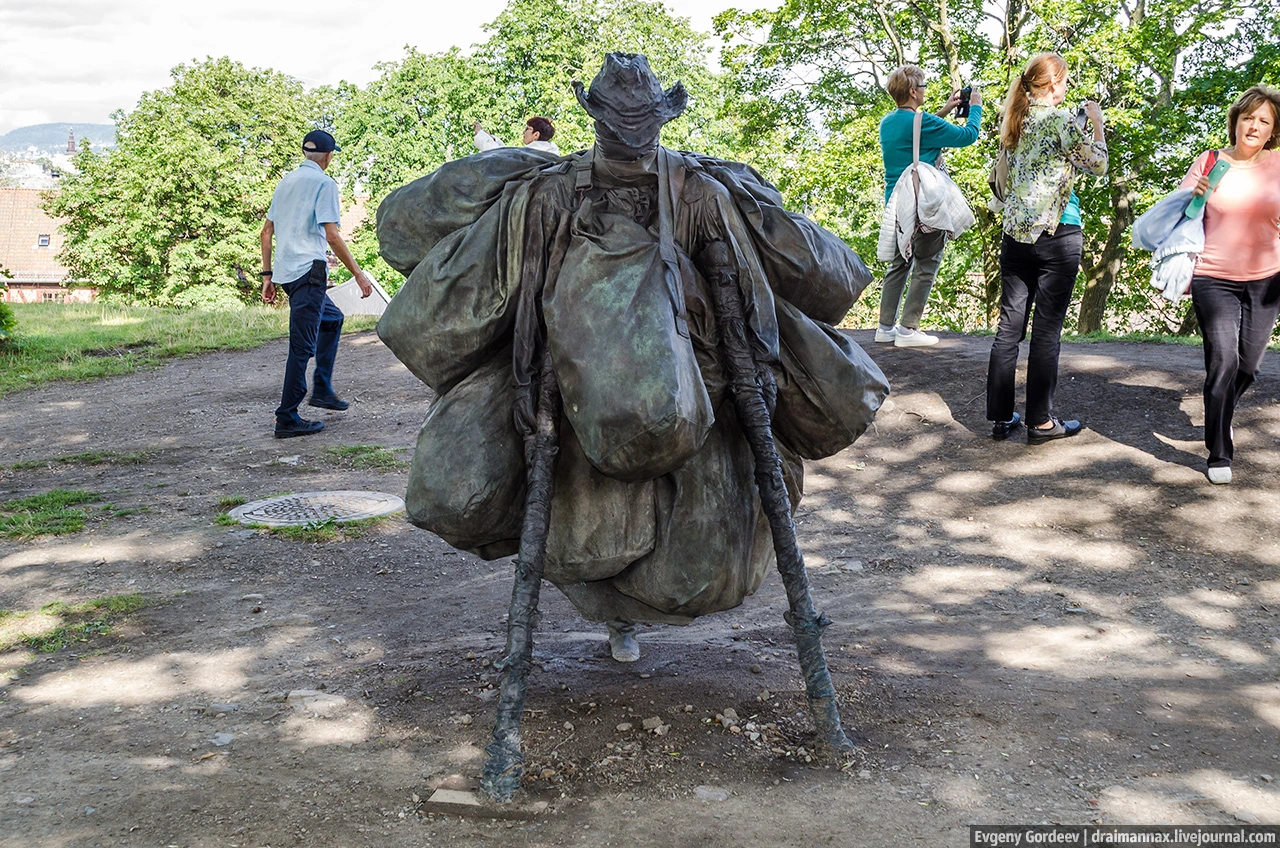
23. The small and cozy park with a pond in the territory of Akershus.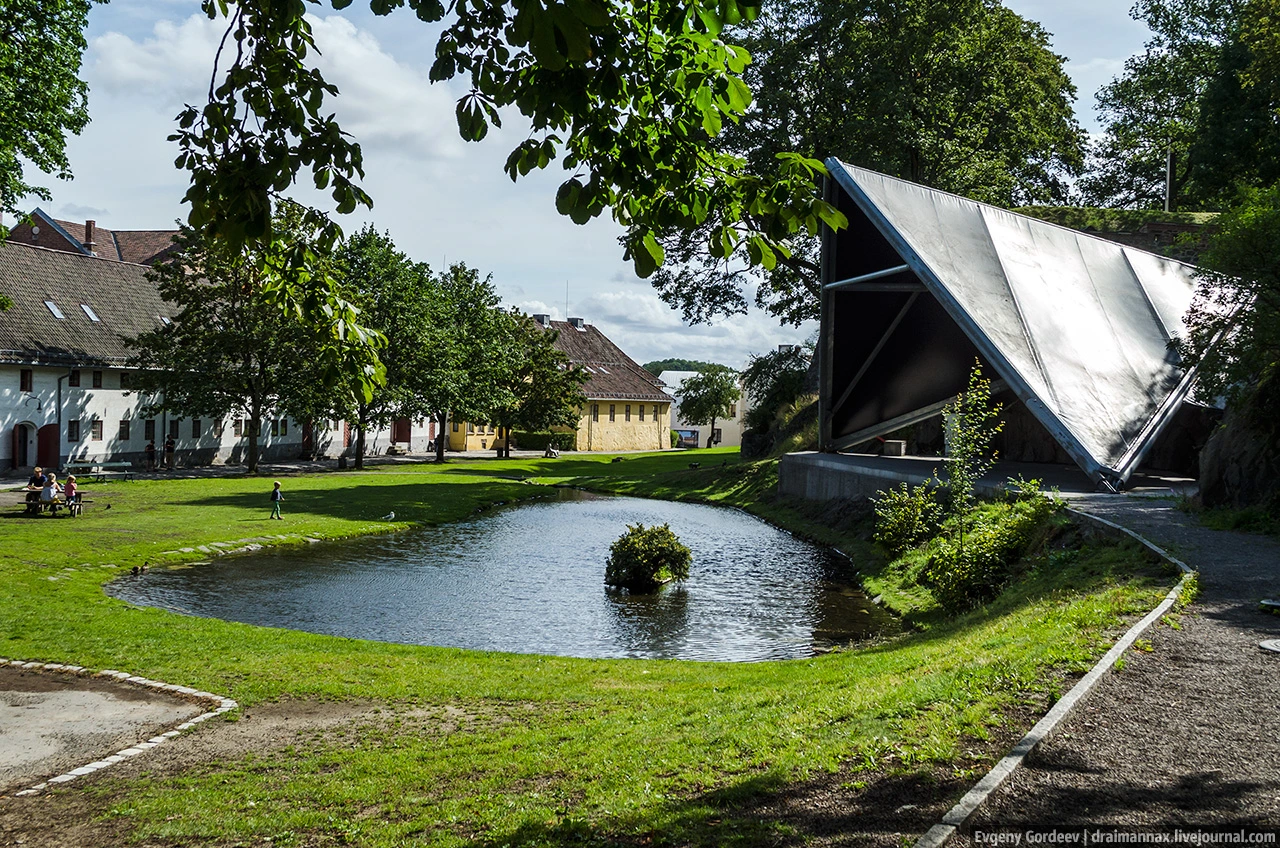
24. There is also a few half-timbered buildings.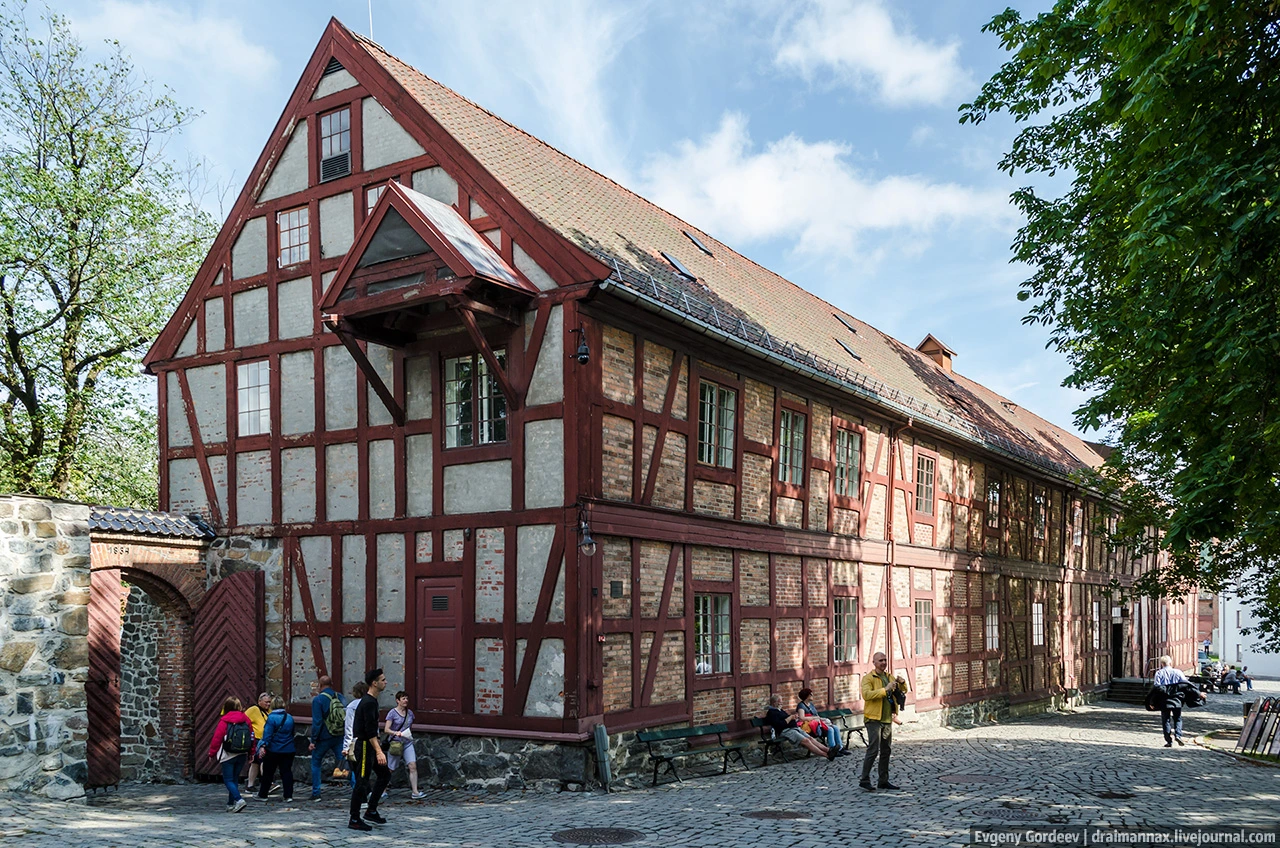
25.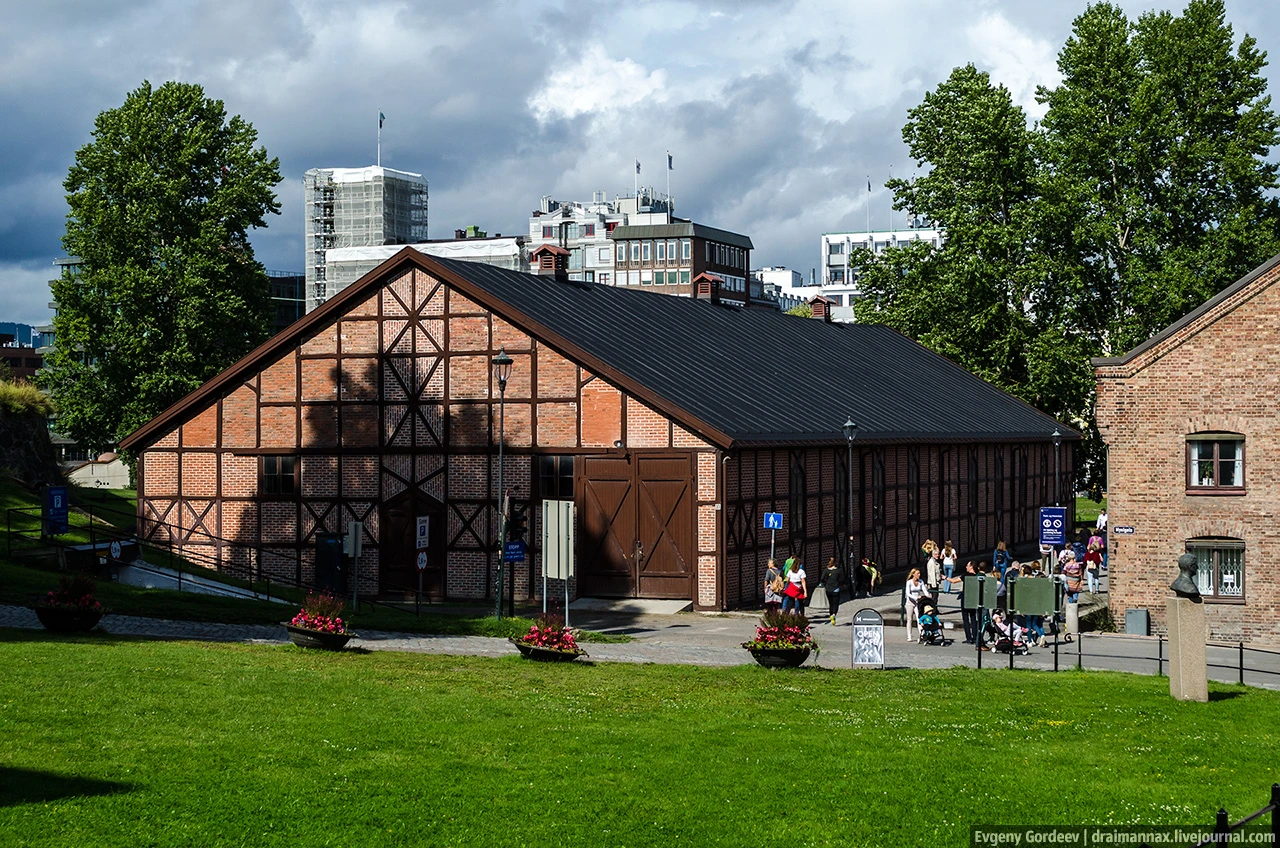
26. Monument to the Minister of Defense and Minister of Foreign Affairs of Norway's Johan Jorgen Canvas (1937-1994).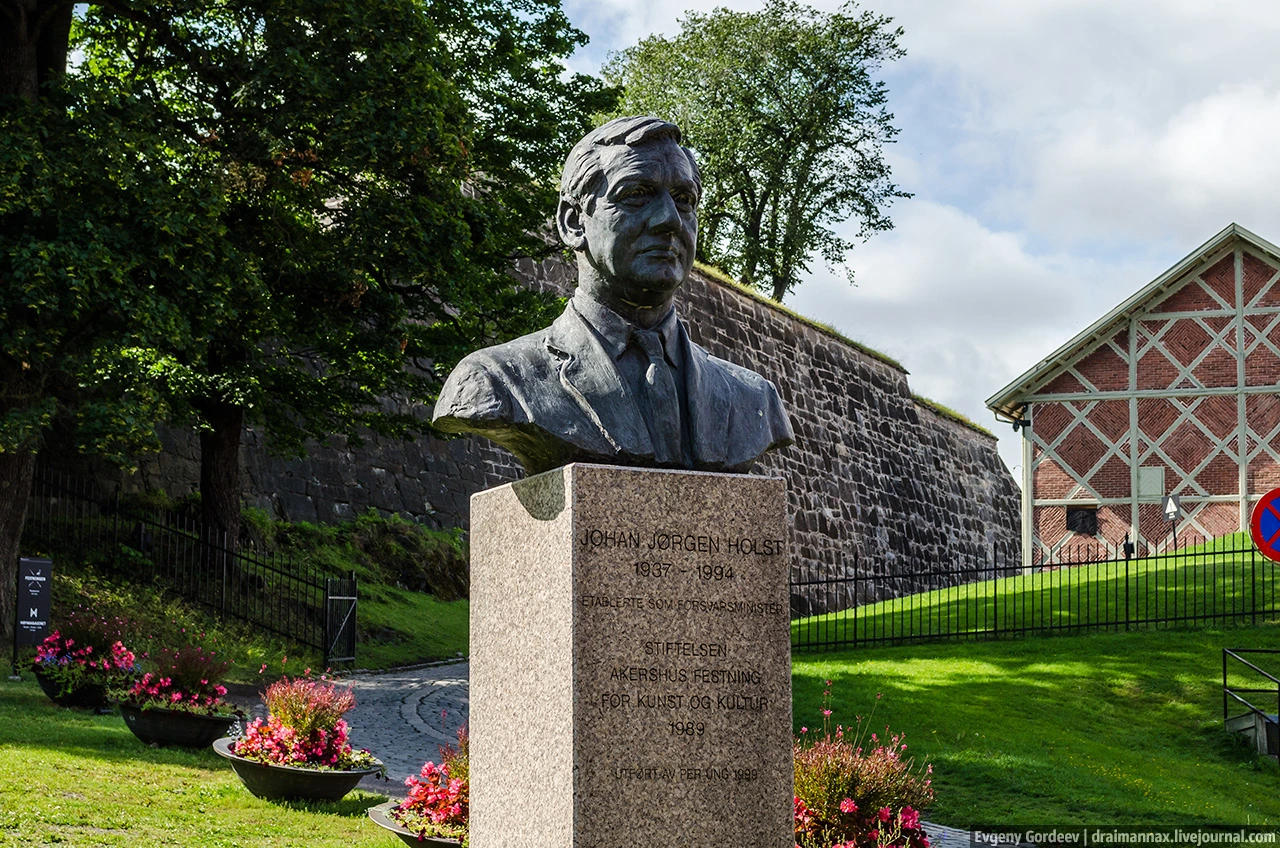
27. Prior to the Town Hall at hand.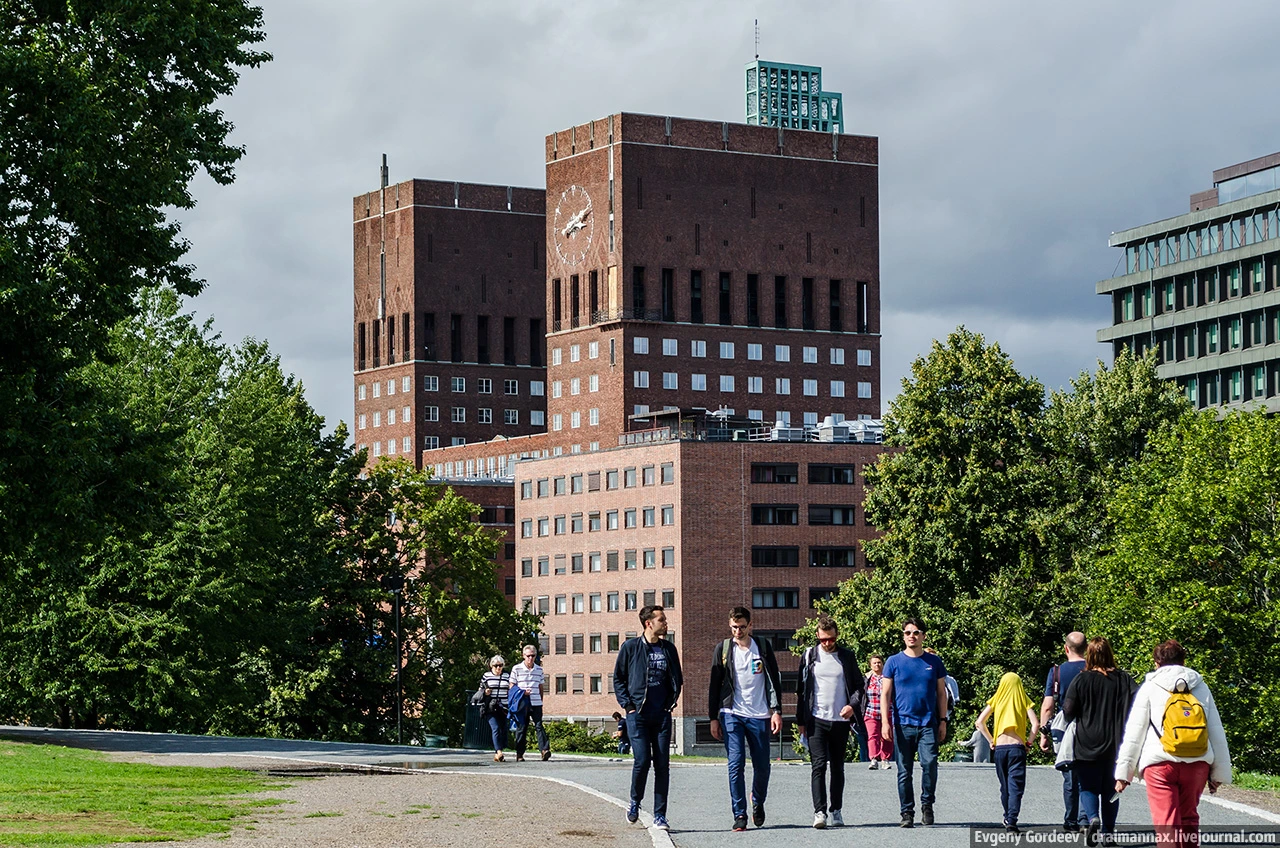
28. tramcar SL79, are manufactured in 1982-1983 and 1989-1990. Electric tram appeared in Oslo in 1894.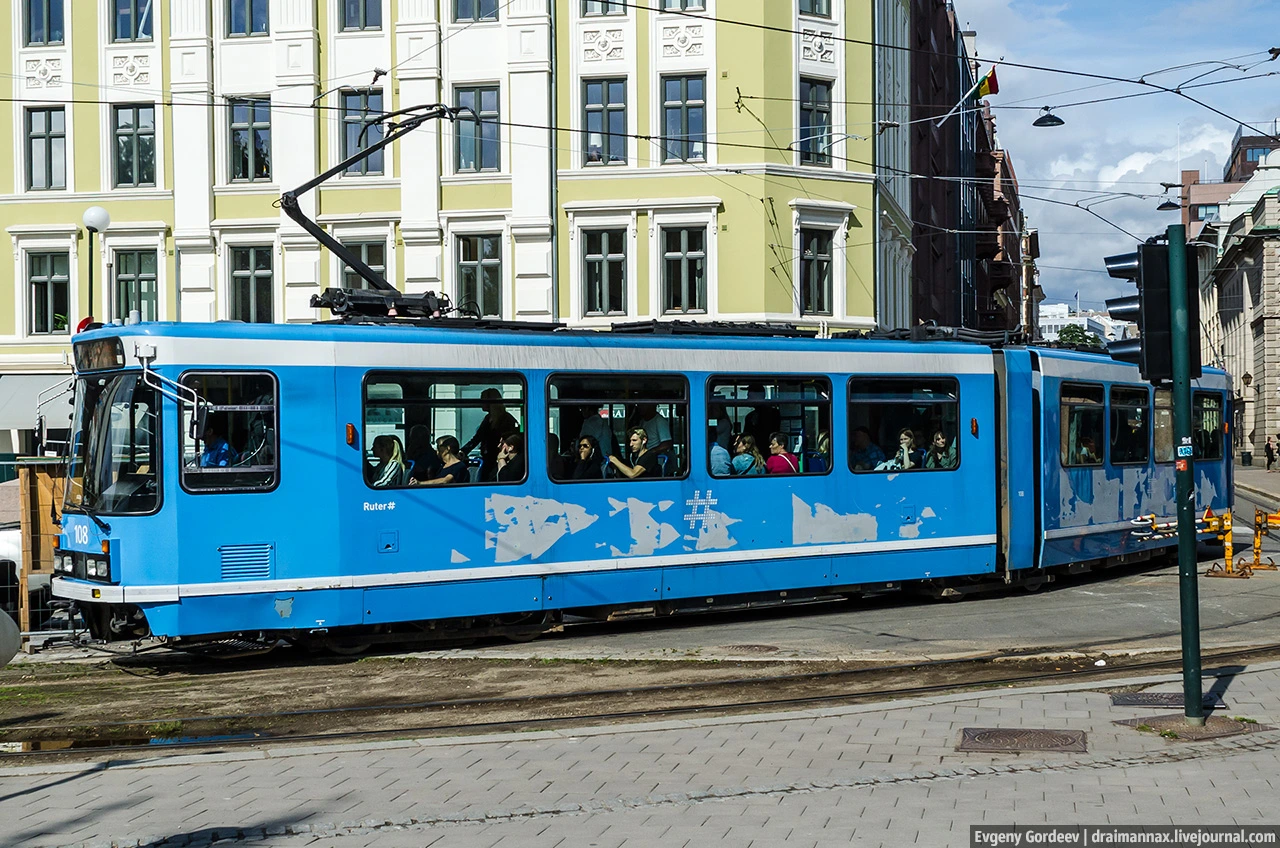
29. The area of Christiania (Christiania Torv) and fountain "The Glove" (Hansken), marking the spot where King Christian IV ordered to lay a new city.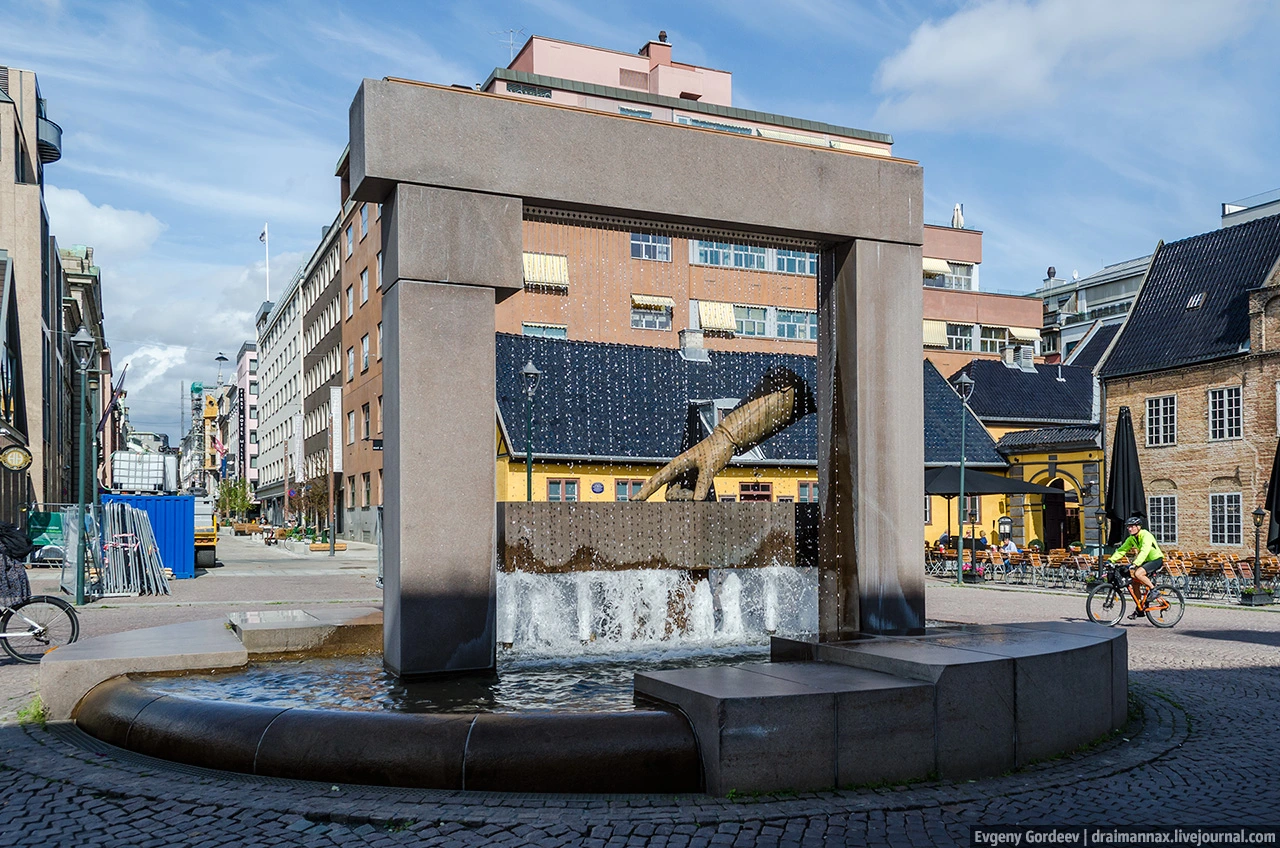
thirty.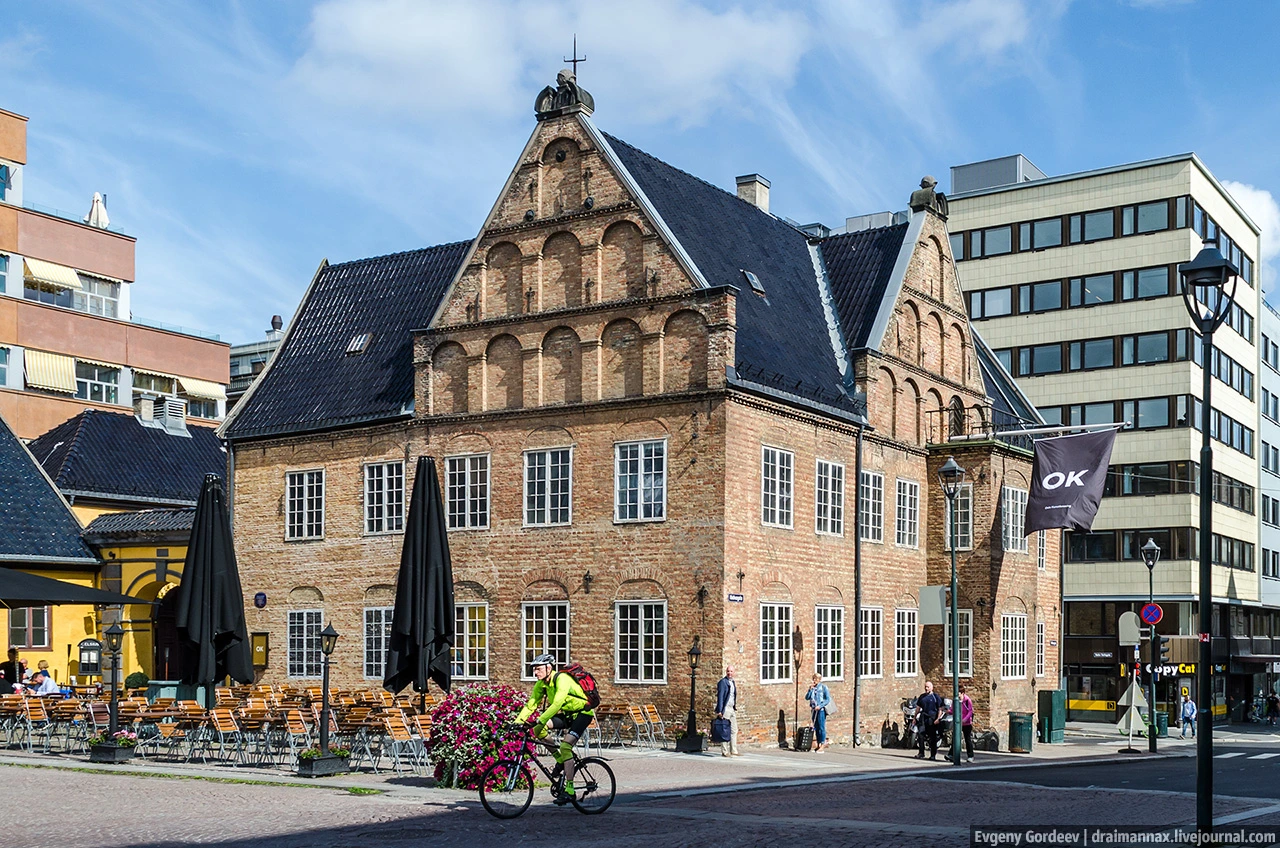
31. The Parliament building in Norway and the Storting (Stortinget), built in 1860-1866, respectively.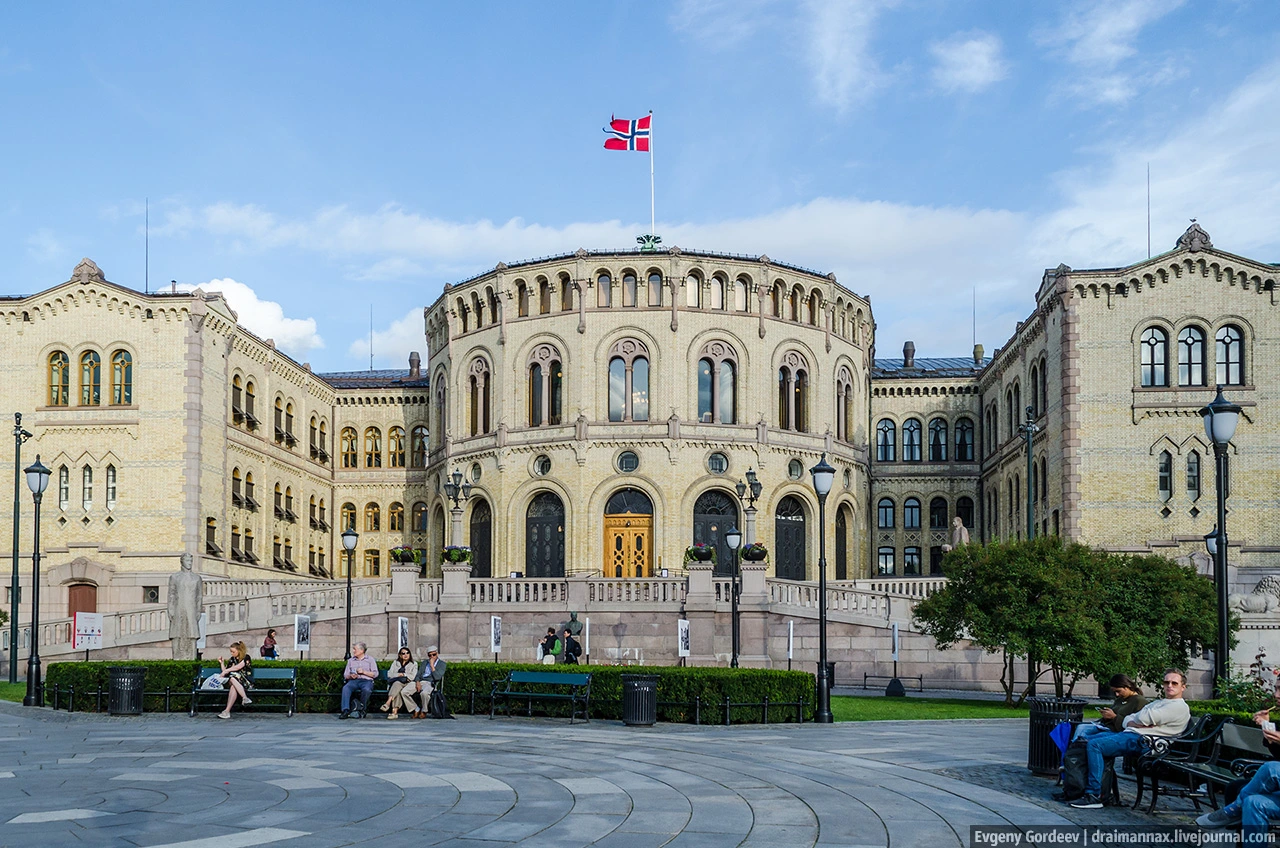
32. And we will finish our walk in front of the Norwegian National Theater (Nationaltheatret), opened in 1899.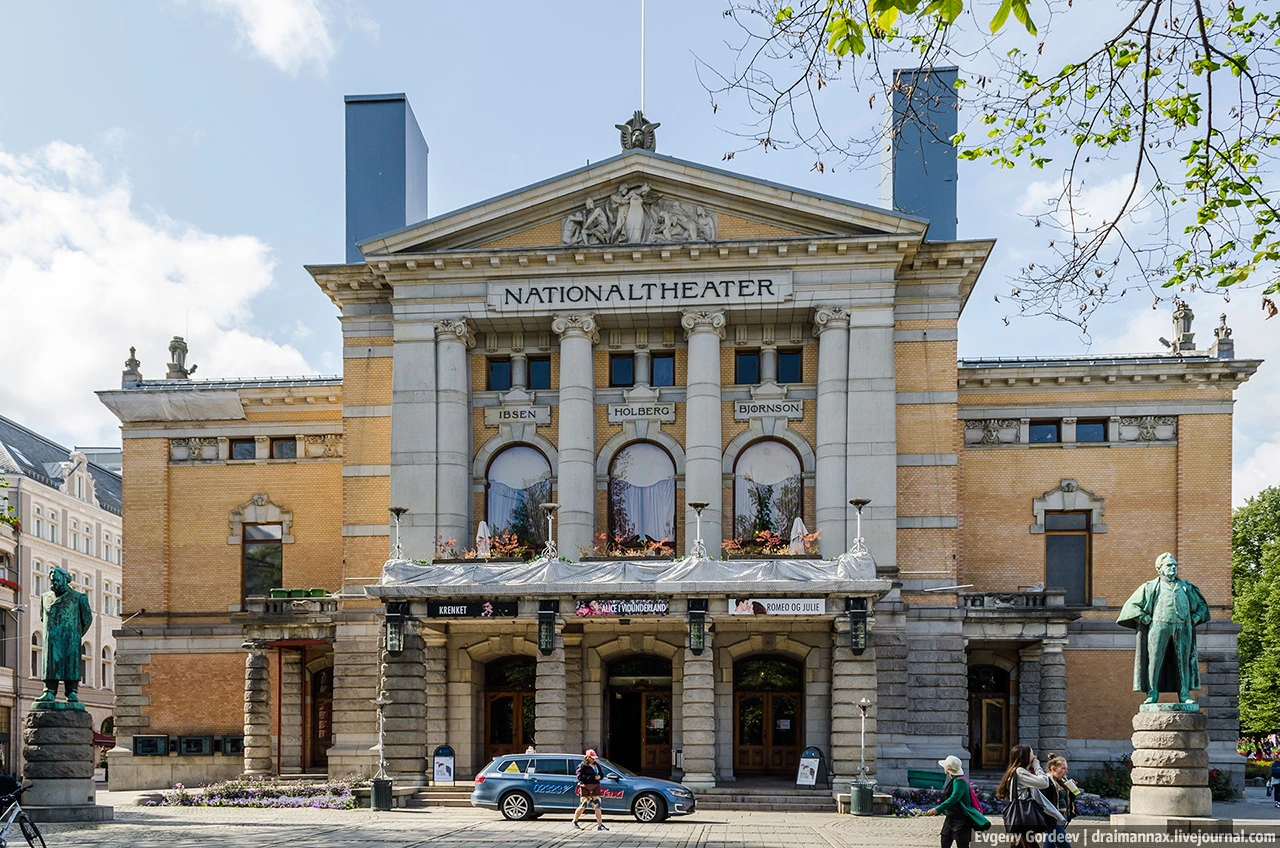
In the meantime, everything, but there is still a lot of interesting things. Stay tuned!

According to the vault of the sagas "The circle of the earth," the Icelandic skald Snorri Sturluson, Oslo was founded around 1049 by King Harald III. The heyday of the city came at the beginning of the XIV century, namely during the reign of Haakon V St. He built the Akershus Fortress and became the first Norwegian king permanently residing in Oslo that has helped the city to become the capital of the country. Oslo was an important trade center and began to establish links with the Hanseatic League, and its population has increased to 3,500. In 1349, in Oslo, the plague came, wiped out three-quarters of the city's population. In 1397, Norway became part of the Kalmar Union, the state capital was moved to Copenhagen and Oslo became a provincial administrative center. Over the years numerous fires devastated built mostly of wood city. After a fire in 1624, King Christian IV ordered not to restore the old city, and to build a new near Akershus, which he named in his honor Christians. Despite the prohibition of the king, the old town was re-populated, mainly the poor who do not have the means to live in a prosperous Christians. In 1814, the provincial city once again became the capital of Norway, but as a part of the Swedish-Norwegian union. During the XIX century, Christiania is rapidly expanding, and its population has increased from 10 thousand to 230 thousand by 1900. In 1877 was held the language reform, and the city was named Christiania, which in 1905 became the capital of Norway is already independent. In 1925, the city returned to its historical name - Oslo. During the Second World War, Oslo, as the rest of Norway was occupied by Germany. In 1952, the city hosted the VI Olympic Winter Games. By 1997, the number of the Oslo population reached half a million people. Currently, Oslo - the capital and largest city in Norway with a population of 673,469 people.
Coat of Oslo is a modern version of the city seal in 1300. The coat of arms depicts the legend of the Holy illustration Hallvarde (aka Hallvard Vebjørnsson), who swam across the ship Drammenford, he rose to defend the life of the woman granted asylum on his ship. The crew unjustly accused of stealing a woman, and Hallvard, protecting her, was killed by being shot with arrows. The woman was buried on the shore, and Hallvarda decided to drown in the fjord, tied to his body millstone, but his remains miraculously did not sink, despite the weight. Veneration Hallvarda arose in the Middle Ages, it is considered the protector of the innocent. At the edge of the emblem is an inscription in Latin that says: "the ET OSLO UNANIMITER CONSTANTER" (Oslo, uniform and constant).
02. We begin our short walk through the center of the Norwegian capital to the Castle Square or Festningsplassen (Festningsplassen). It has long been carried out various kinds of parades and festivals, and June 1, 1989 on the area of a solemn Mass celebrated by Pope John Paul II. The most notable building in the square - it is the home of the commandant of the fortress (Kommandantboligen), built in 1844.

03. Mention should also be open in 1970, the National Monument to the victims of the war years 1940-1945 (Nasjonalmonumentet for krigens ofre 1940-45). A large female figure symbolizes Norway and men - her sons, who defended their homeland.

04. But we move on. After the bridge over the street or the Royal Kongens (Kongens gate) ...

05. ... and find ourselves in the castle and Akershus Fortress (Akershus slott og festning). For the first time the fortress is mentioned in 1300, and its founder is considered the king Haakon V of the Holy, who built it to protect Oslo. Throughout its history the castle was subjected to numerous rearrangements, and at the beginning of the XIX century and he did fell into disrepair. At the end of the XIX century in Akershus started extensive restoration work, completed only in 1976.

06. During the Second World War it housed the Gestapo. In May 1945, the castle was returned to the Norwegians. After the war on its territory were executed 8 people accused of collaborating with the Nazis.

07. Currently, the castle is located a number of museums, as well as the headquarters of the Norwegian Armed Forces and Ministry of Defense.

08. With fortifications excellent views of the Oslo fjord bay (Oslofjorden), which geologically is not a fjord.

09. On the waterfront was seen French electric unmanned bus Navya Arma, working in the city since April 2019.

10. District Aker Brugge (Aker Brygge).

eleven.

12.

13. We go around the castle on the north side.

14. It can be seen very well built in the years 1931-1950 the building of City Hall (Oslo rådhus). Every year on December 10 in the Town Hall held a ceremony awarding the Nobel Peace Prize.

15. Also in the presence of a suitable optics can be considered a museum on the peninsula Byugdoy (Bygdøy): Norwegian Maritime Museum (Norsk Maritimt Museum), "Fram" Museum (Frammuseet) and the Museum of "Kon-Tiki" (Kon-Tiki Museet).

16. From here you can watch the ships scurrying around the bay.
Marine passenger ship of coastal navigation Båtservice V, launched on presumably in 1954, the home port - Oslo.

17. The cruise ship of the type "Galaxy", launched in 1996, the home port - Valletta.

18. Few of the local street art.

19.

20. The building of the Norwegian Resistance Museum (Norges Hjemmefrontmuseum), dedicated to the fight against the Norwegians with the German occupiers during the Second World War.

21. Next to the museum on the site of the shooting in February and March 1945, 40 members of the Resistance mounted a memorial. The inscription on it reads: "They fought, they fell, they gave us everything."

22.

23. The small and cozy park with a pond in the territory of Akershus.

24. There is also a few half-timbered buildings.

25.

26. Monument to the Minister of Defense and Minister of Foreign Affairs of Norway's Johan Jorgen Canvas (1937-1994).

27. Prior to the Town Hall at hand.

28. tramcar SL79, are manufactured in 1982-1983 and 1989-1990. Electric tram appeared in Oslo in 1894.

29. The area of Christiania (Christiania Torv) and fountain "The Glove" (Hansken), marking the spot where King Christian IV ordered to lay a new city.

thirty.

31. The Parliament building in Norway and the Storting (Stortinget), built in 1860-1866, respectively.

32. And we will finish our walk in front of the Norwegian National Theater (Nationaltheatret), opened in 1899.

In the meantime, everything, but there is still a lot of interesting things. Stay tuned!

